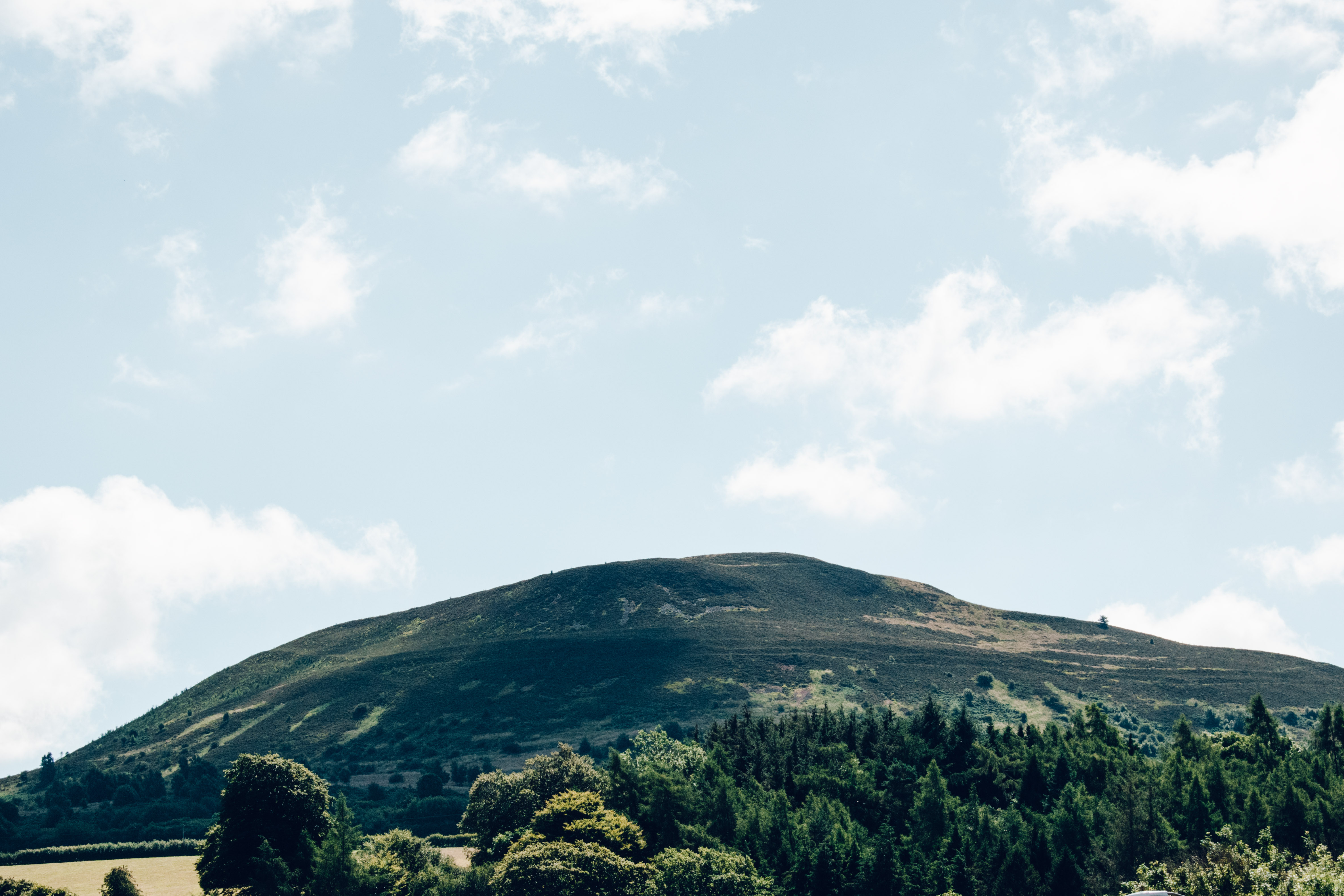
The south east corner of Scotland is one of the most overlooked bits of the country. Most people head north to the dramatic landscapes of the highlands, or spend their time based out of the buzzing Scottish capital, Edinburgh. However, if you want to avoid the crowds, the Scottish Borders might just be the destination for you. The hills might not be quite as wild as further north, but the Borders have all the historic castles, dramatic coastlines, picturesque small towns and rolling hills to deliver everything a Scottish adventure should.
The Scottish Borders – more often referred to simply as the Borders and sometimes also referring to parts of northern Northumberland – stretches from the Pentland, Moorfoot and Lammermuir Hills in the north, to the Cheviot Hills in the south. It can roughly be divided into two, with the east and west having quite different characters. To west you will find rolling hills, vast moorlands and small market towns. To the east there are dramatic sea cliffs, seaside villages and gentler rural farmland. The Borders are also steeped in history, having played a central role in the English-Scottish wars. The largest battled ever fought between England and Scotland took place here – the 1513 Battle of Flodden.
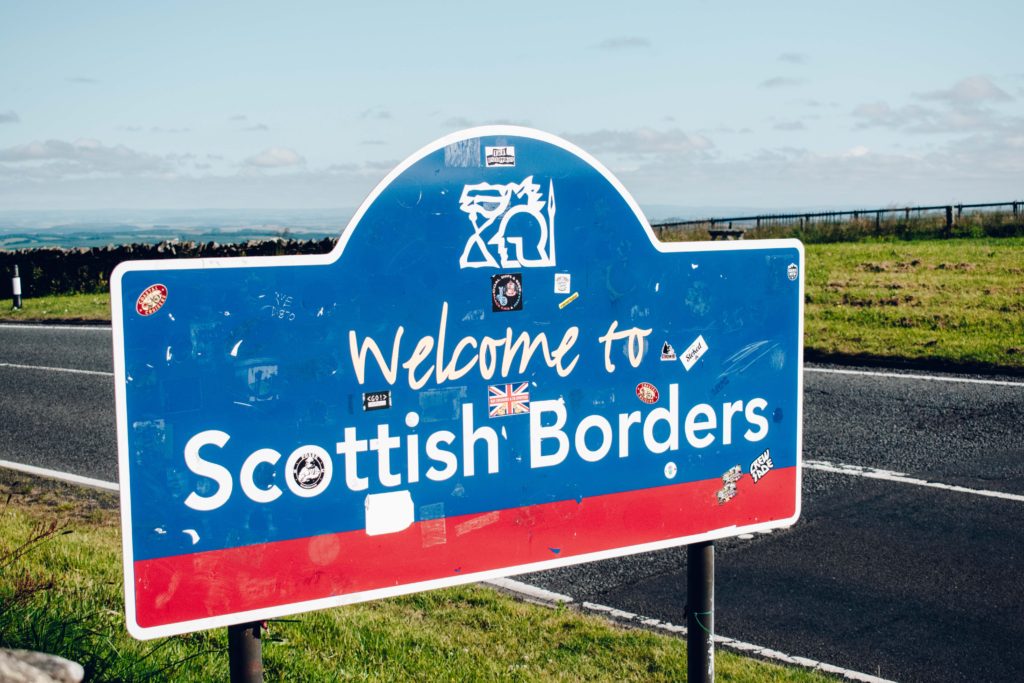
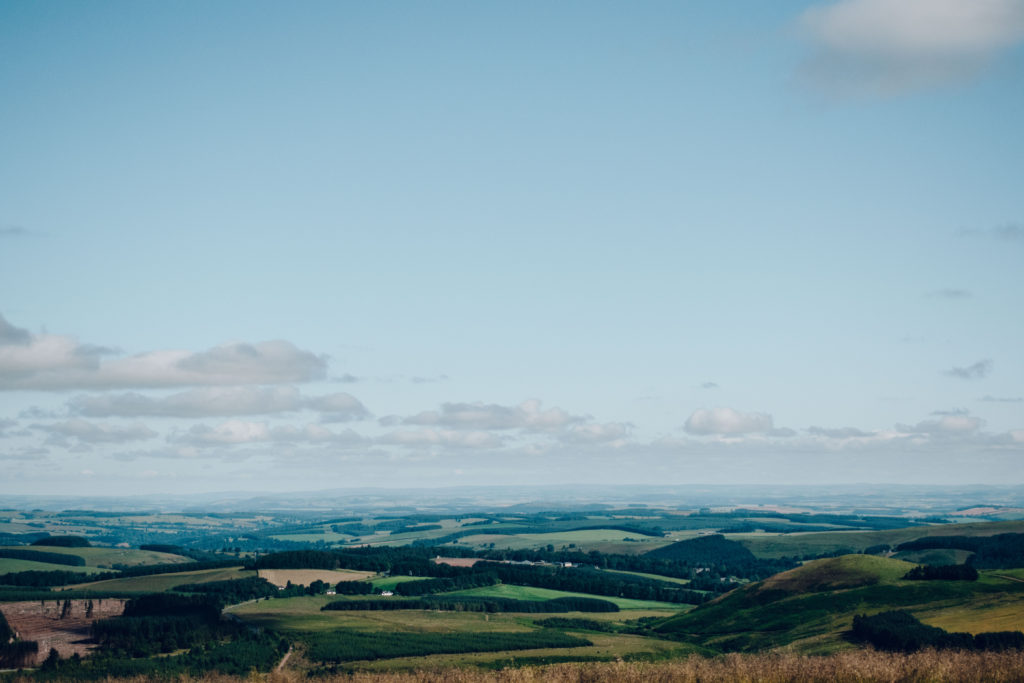
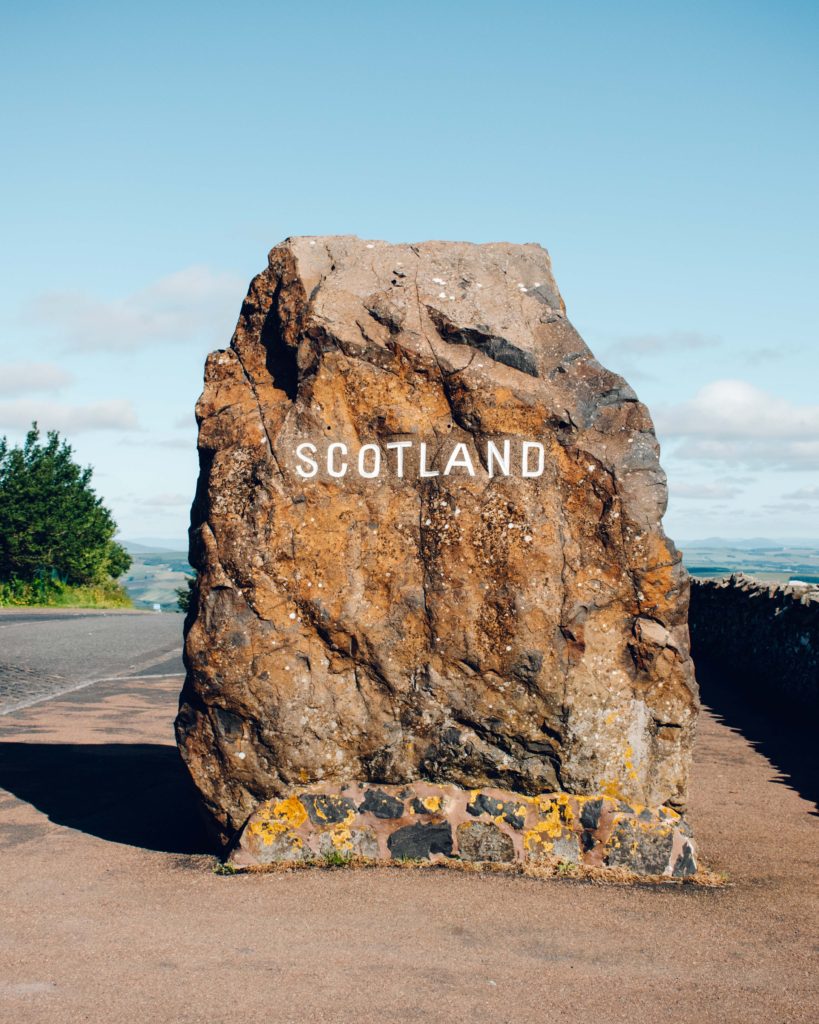
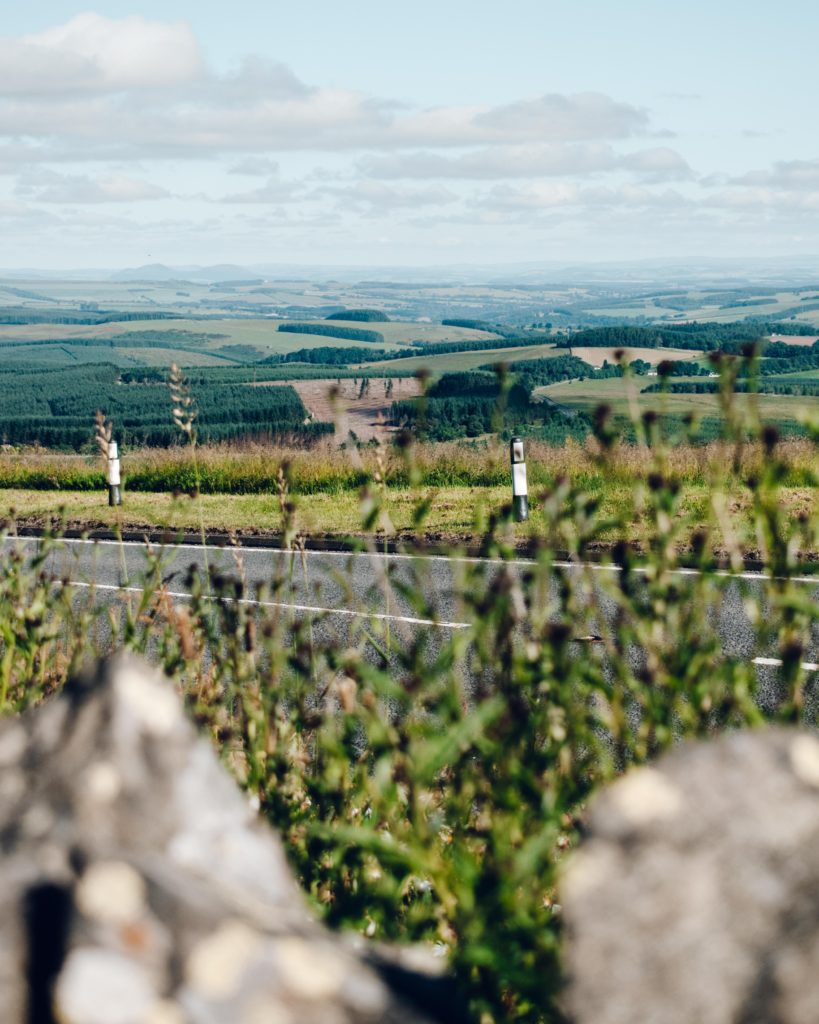
GETTING THERE
The Scottish Borders is one of the easiest regions of Scotland to reach. Most of the places mentioned in this guide are possible to visit as a day trip from Edinburgh, or if you are staying in the North East of England.
If you are entering Scotland by road from England, I would strongly recommend taking the route over the A68 and crossing the border at Carter Bar. It is by far the more picturesque (although the A1 layby has more flags…) with magnificent views out across the Borders, Upper Reesdale and the Cheviot Hills.
By rail, the main station is Berwick Upon Tweed which sits on the East Coast Main Line almost halfway between Edinburgh and Newcastle. The journey from either is around an hour. The new Borders Railway also offers trains from Edinburgh to Tweedbank, taking just under an hour.
The closet airports are Newcastle and Edinburgh.
GETTING AROUND
The main bus service is Borders Buses, which connects the main towns and provides services to Edinburgh. However, services are limited and to visit almost all sites below you will need your own vehicle.
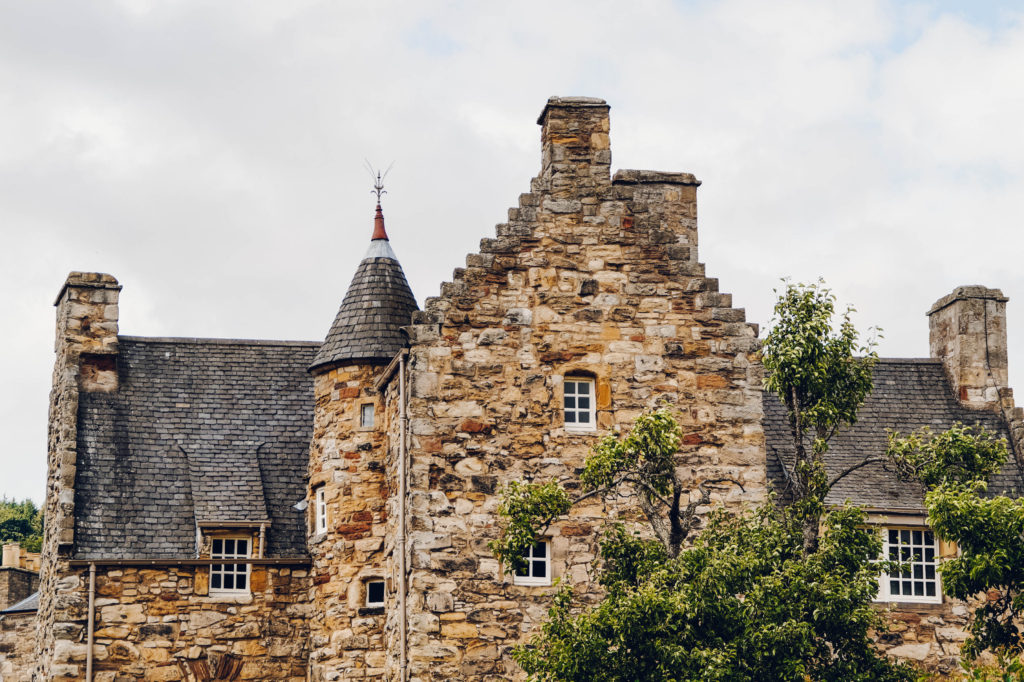
THE MARKET TOWNS
Kelso – picturesque town at the convergence of the Rivers Tweed and Teviot. It claims to be home to the largest market square in Scotland! The five-arched bridge over the Tweed, built by John Rennie in 1803, was the model for London’s Waterloo Bridge.
Jedburgh – a Royal and Ancient Burgh known as the gateway to Scotland and the main town in The Scottish Borders. It’s a pretty market town, only 10 miles from the English border and has lots of cafes, restaurants and shops. Alongside the Abbey (more below), the most popular site is Mary, Queen of Scots’ House. She definitely spent a month in Jedburgh in 1566, although whether it was actually in this picturesque 16thC house is somewhat debated! There is an interesting exhibition about her life, including her spookily realistic death mask (free entry).
Melrose – buzzing market town with independent cafes and boutique shops lining the small high street. Melrose sits between the River Tweed and the three peaks of the Eildon Hills.
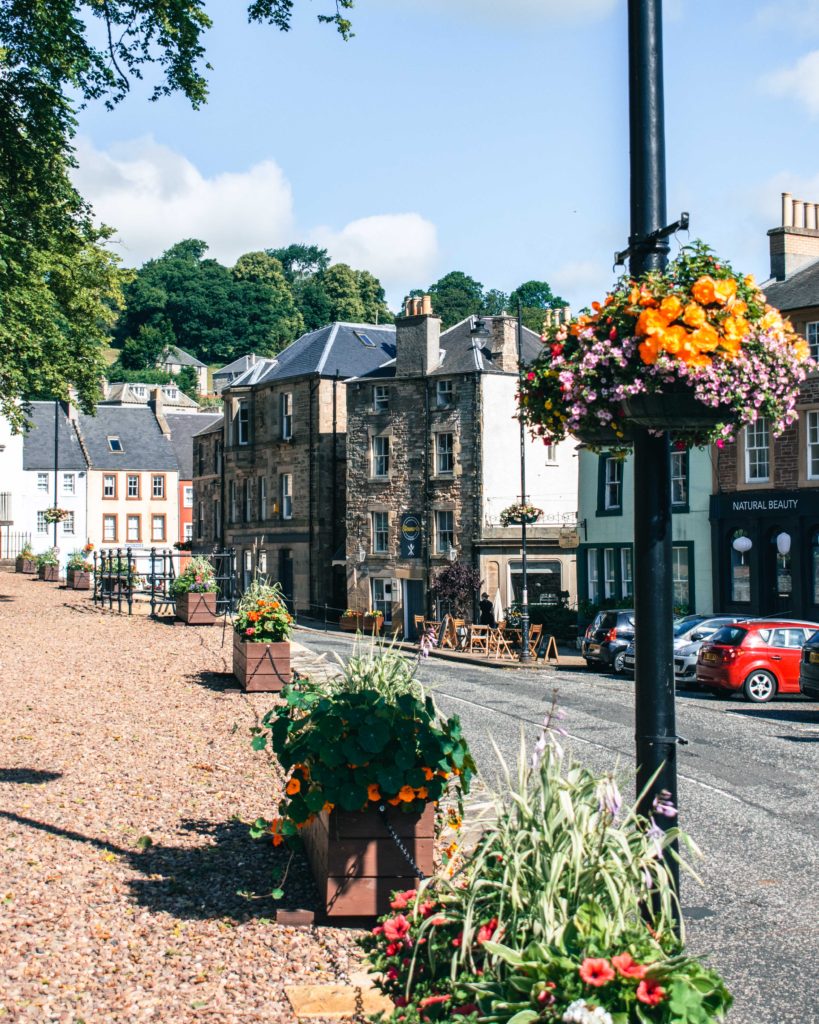
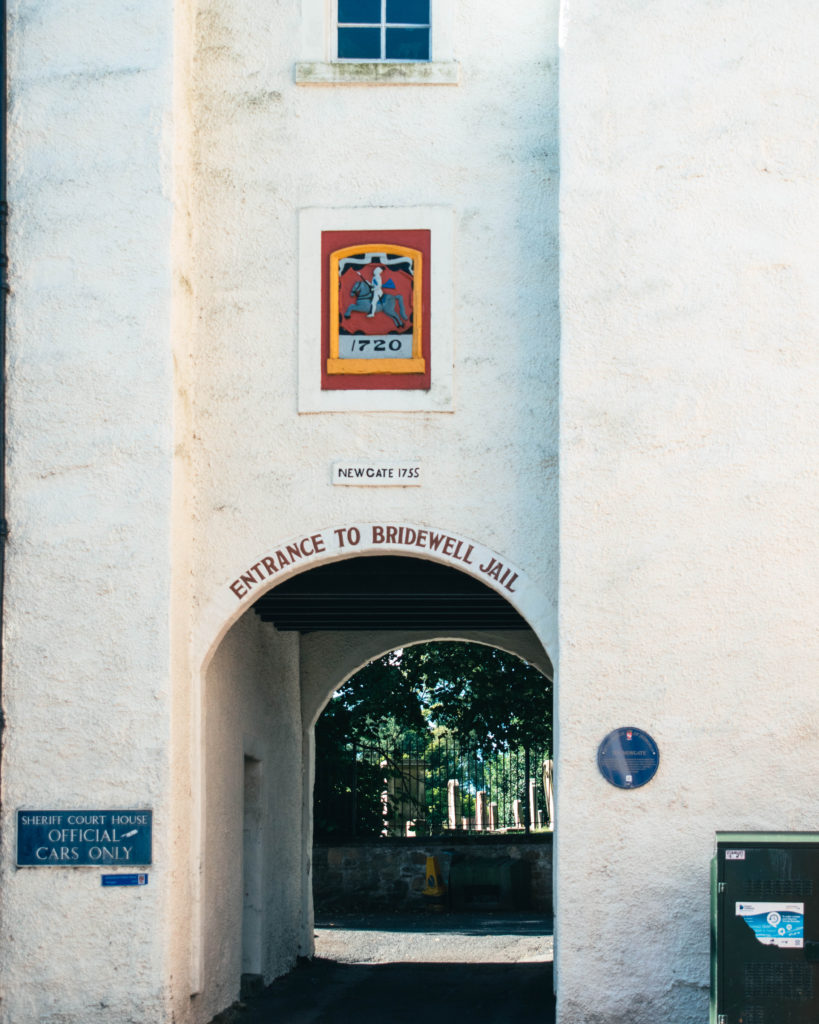
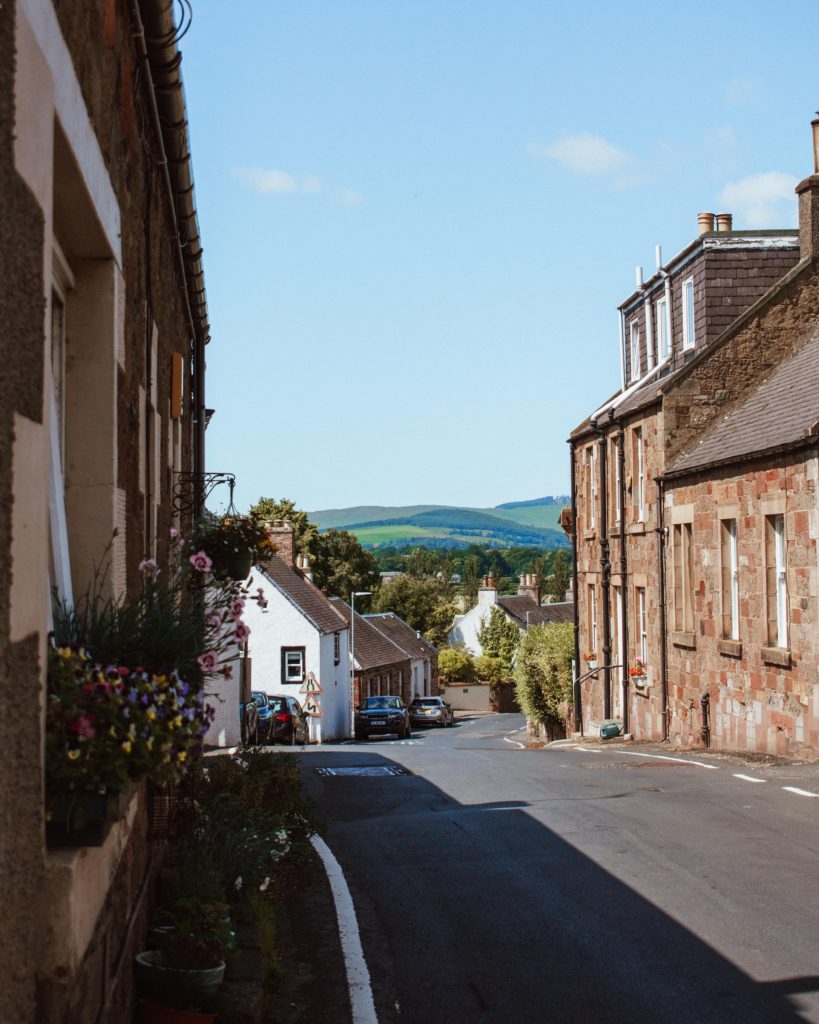
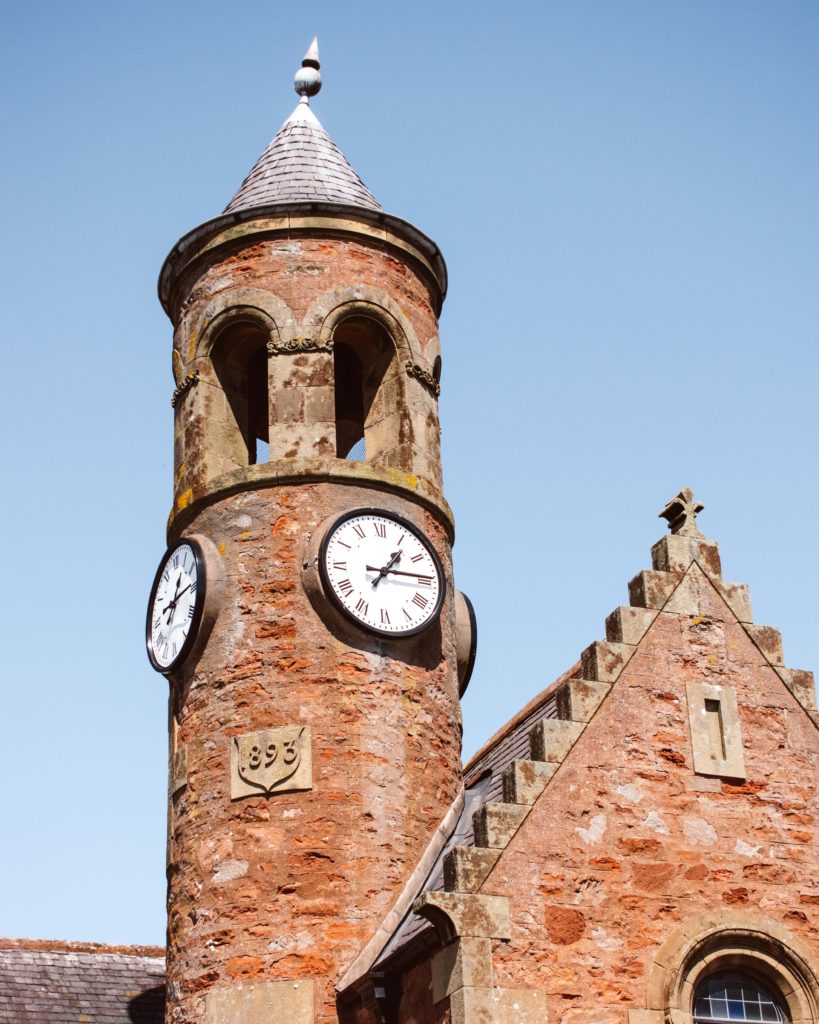
Hawick – the Scottish Borders have long famous for its knitwear, and this is the place to pick up a cashmere souvenir. In the 1800s Hawick was the centre of the British tweed and cashmere industry. These textiles brought great prosperity – by the 1860’s Hawick was the highest-earning town in the United Kingdom per head of population. The Border’s Textile Towerhouse has exhibitions on the history of the industry, in the oldest building in Hawick (entry free).
Hawick is also where you will find the Borders Distillery. The distillery building itself is beautiful, housed in a former Victorian electrical works. When it opened in 2018, this was the first distillery in the borders since 1837! Tours can be booked by phoning in advance.
THE CASTLES
Thirlestane Castle – home of the Earls of Lauderdale, it was original a solid stone keep, but over the years various family members have added to the castle turning it into the grand country house now standing. Bonnie Prince Charlie stayed at the castle in 1745, after the victory at the Battle of Prestonpans. (Adults £15).
Floors Castle – the largest castle in Scotland still inhabited, and is the family home of the 10th Duke of Roxburghe. When it comes to fairy tale architecture, you can’t beat Floors Castle. They also sell fantastic apple pies in their deli, and as a child I was convinced the Duke of Roxburghe was personally making them all in the kitchen! (Adults £15).
Traquair House – dating back to 1107 and originally a royal hunting lodge, Traquair has been visited by 27 Kings and Queens and played a part in the Jacobite rebellion. It was the most prominent Jacobite house in southern Scotland, with the Stuart family of Traquair maintaining their loyalty to the Jacobite cause from the outset until well after the failed rebellion. In 1745, the fifth Earl of Traquair closed the ‘Bear Gates’ leading up the avenue to the house after Bonnie Prince Charlie’s visit and vowed not to open them again until a Stuart King reclaimed the throne. Given the last direct male descendent of the Stuart Kings died in 1807 the family may be waiting some time to reopen them! (Adults £12).
There has been a brewery at Traquair since the 16thC but it fell into disuse and was not restarted until 1965. They now produce a selection of award winning traditional Scottish ales.
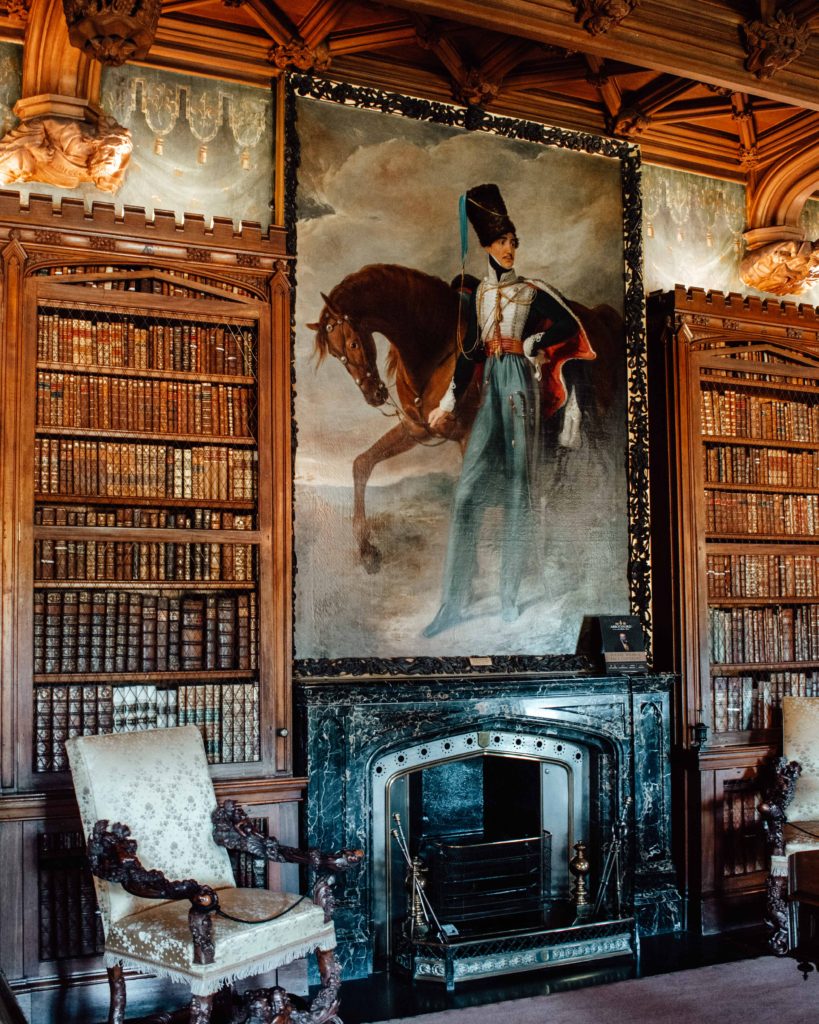

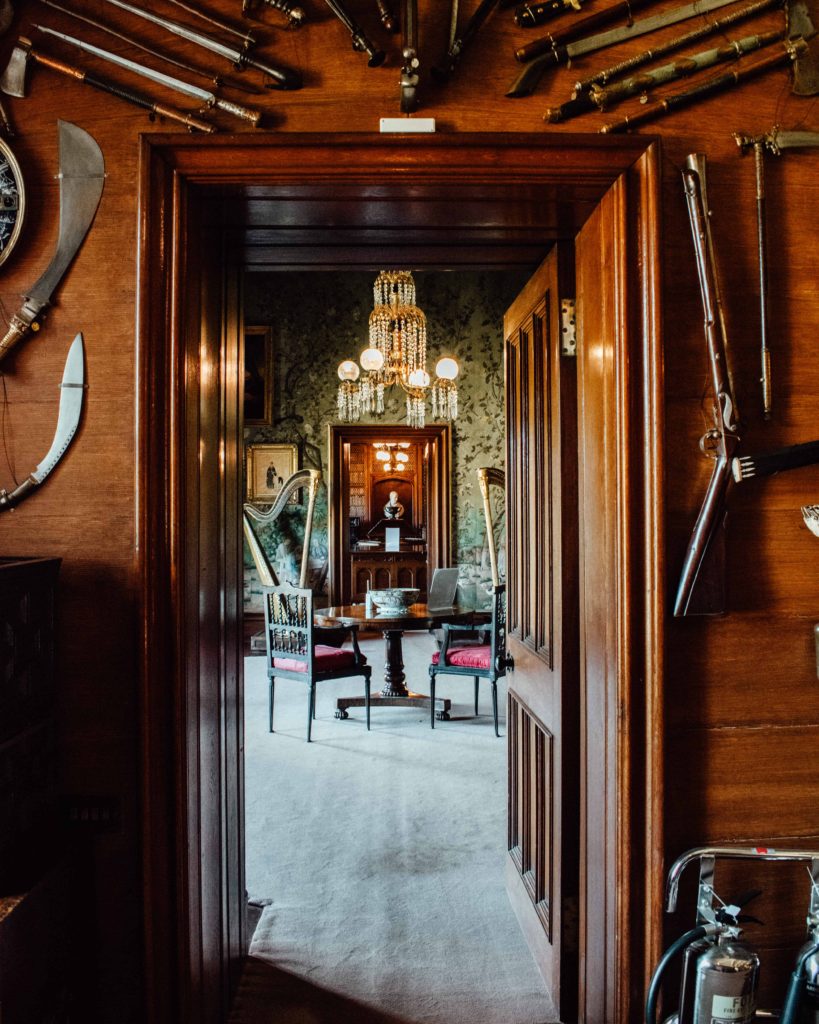
Abbotsford House – the home of 19th century novelist and poet, Sir Walter Scott. The property, set on the banks of the River Tweed, was bought in 1811 and then extensively remodelled. The writer died here in 1832, and the house was opened to the public just five months after his death. The rooms that you visit have been left virtually untouched since his death. Some of the most interesting items on display are the personal collections of Scott, including objects such as the weapons of Rob Roy, the case book of Napoleon, and even a bullet and piece of oatcake taken from the site of Culloden Battlefield. His famous desk sits in the middle of his first-floor study, and a 9,000-volume library is just as Scott left it. On a typical day of writing Scott would spend 18 hours at his desk, producing 8,000 words. The 120 acres of gardens are really beautiful, and there are some lovely river walks to explore in the wider grounds. It is said that as he was dying in 1832, Scott’s bed was set up in the dining room so that he could listen to the river. (Adults £11.70 – 10% discount when bought online in advance).
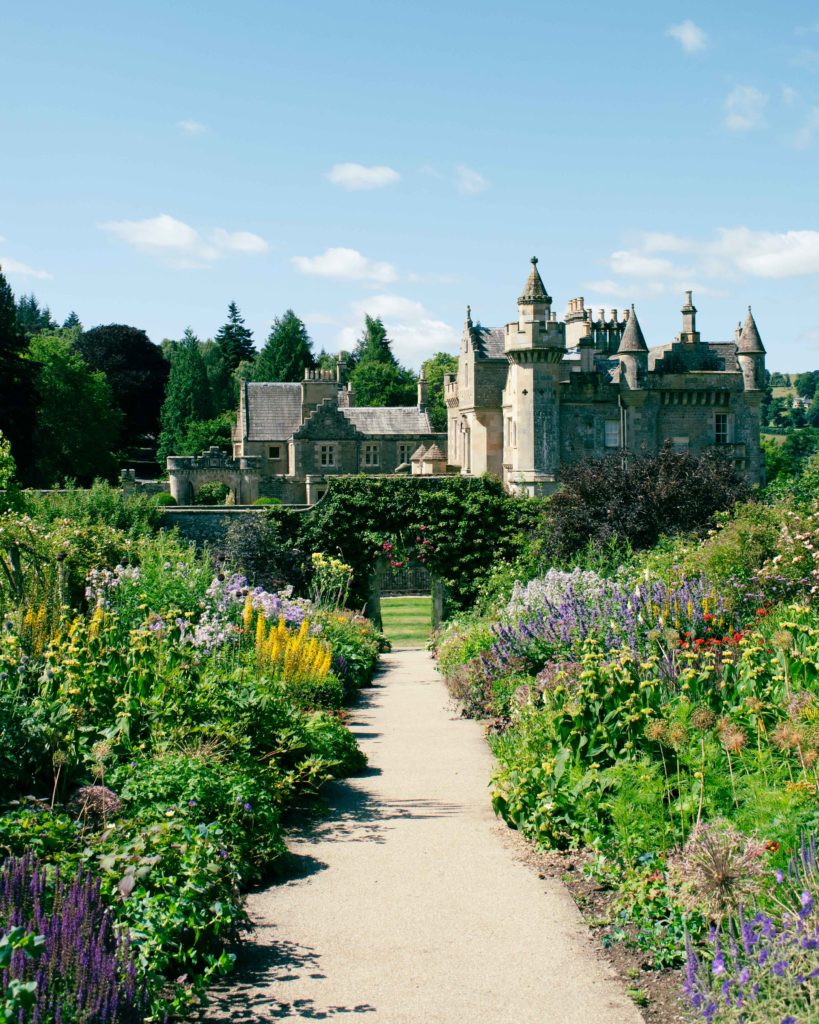
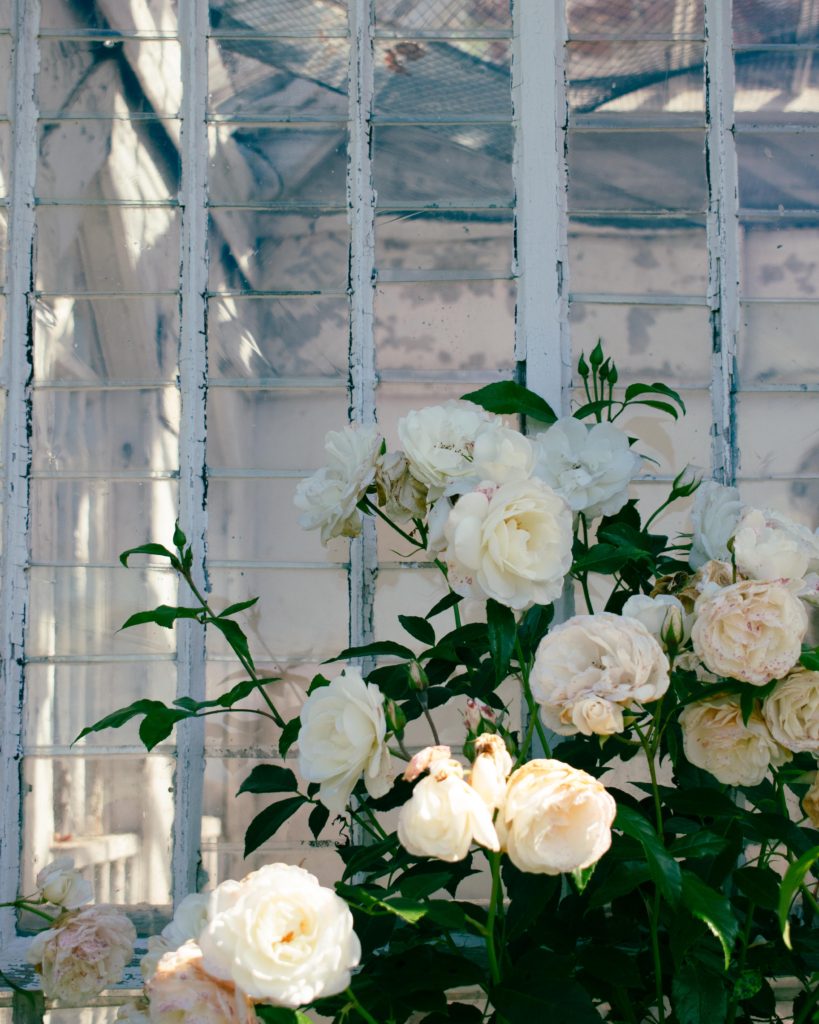
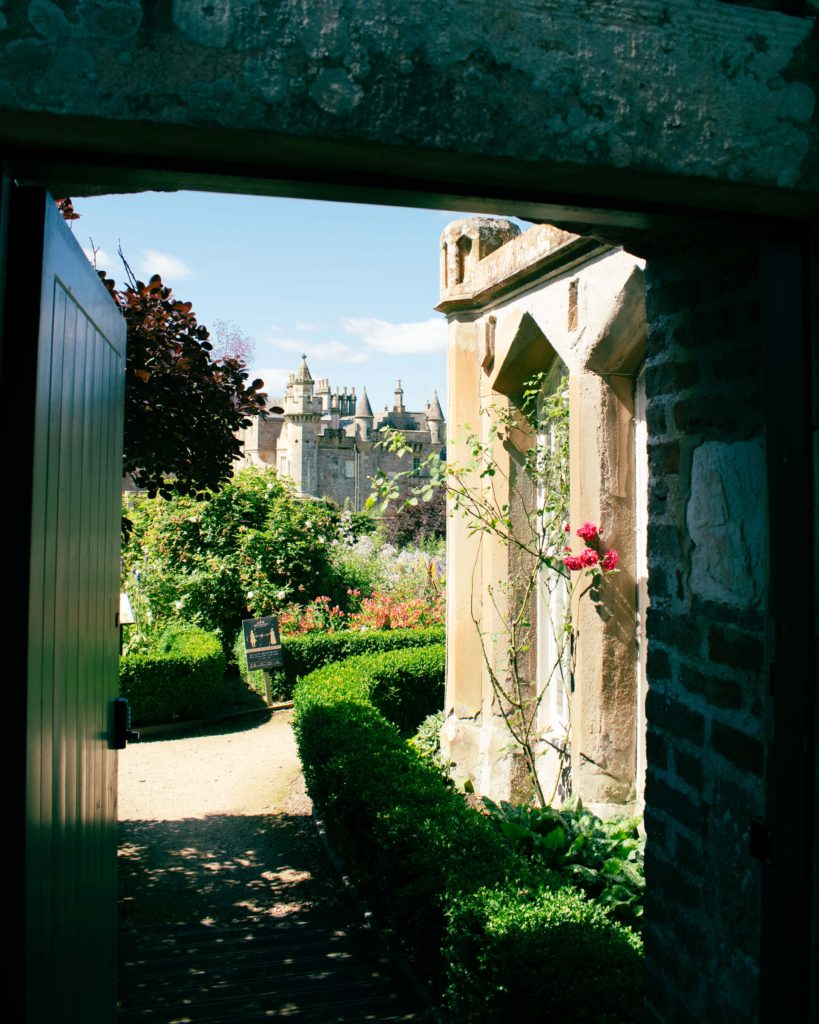
The Man who Invented Scotland
It is impossible to visit Scotland and not encounter Sir Walter Scott. Arriving by train into Edinburgh you will disembark at a station named after his most popular novel, and step out onto the streets of Princes Street in front of the world’s largest monument dedicated to an author. Sir Walter Scott was a novelist and poet who is often considered the inventor of the historical novel. He is also credited with “inventing” Scotland – or at least one version of it – and cementing in popular imagination many of the traditions now considered integral to Scottish culture.
Born in Edinburgh in 1771, as a young child he was sent to live in the Borders to recover from polio. Scott’s later writings covered the whole of Scotland, but his heart was always in his adopted home of the Scottish Borders and they feature heavily in his novels. Scott began studying classics at the University of Edinburgh in 1783, and subsequently law. It was during this time that Scott met the other great Scottish Poet, Robert Burns, at a literary salon in the winter of 1786.
Scott qualified as a lawyer in 1792, and started his first forays into literature – translating German texts – whilst working as an Advocate. In 1809, he joined a publishing house as a silent partner. In 1814, when the publishing house was struggling financially, Scott began writing novels as a means of making money. His first novel Waverley was published anonymously and quickly gained worldwide success. Scott continued to produce novels with a historical Scottish setting under a pseudonym until officially admitting he was the author in 1827.
His novels have created a lasting idea of Scotland that remains the dominant image most people have of the country today, even though few nowadays read his novels or poems. Spectacular highland landscapes, punctuated by romantic castles and dark lochs, all inhabited by courageous and hardy peoples swathed in tartan. His portrayals of the Highlands helped generate an influx of tourists that continues today.
The idea of clan tartans and kilts as the principal highland dress is probably the most visible impression Scott made on Scottish history. King George IV was a big fan of Waverly, and after his coronation, the King asked Scott to manage a royal visit to Edinburgh in 1822 – the first by a sitting monarch since 1651. The visit was a vast display of invented pageantry. Kilt and tartan, effectively outlawed since the aftermath of the 1745 rebellion and as a result only used by the army, became integral to Scott’s romantic “heritage” of Scotland and a mainstay of 19thC fashion. Scott also created the idea of clan tartans, or patterns specific to a particular family. He mistakenly thought leading families claimed unique colour combinations just as the English aristocracy had created family coats of arms. In reality, although some tartans were used as regimental uniforms for Scottish battalions, weavers simply chose colours based on locally available dyes and specific designs were not associated with individual families.
THE FOUR ABBEYS
King David I (1124-1153) founded four abbeys in the Scottish Borders during the mid-1100s, each for different religious order. They are now all in various states of ruin, having been destroyed by invading armies in the 14thC.
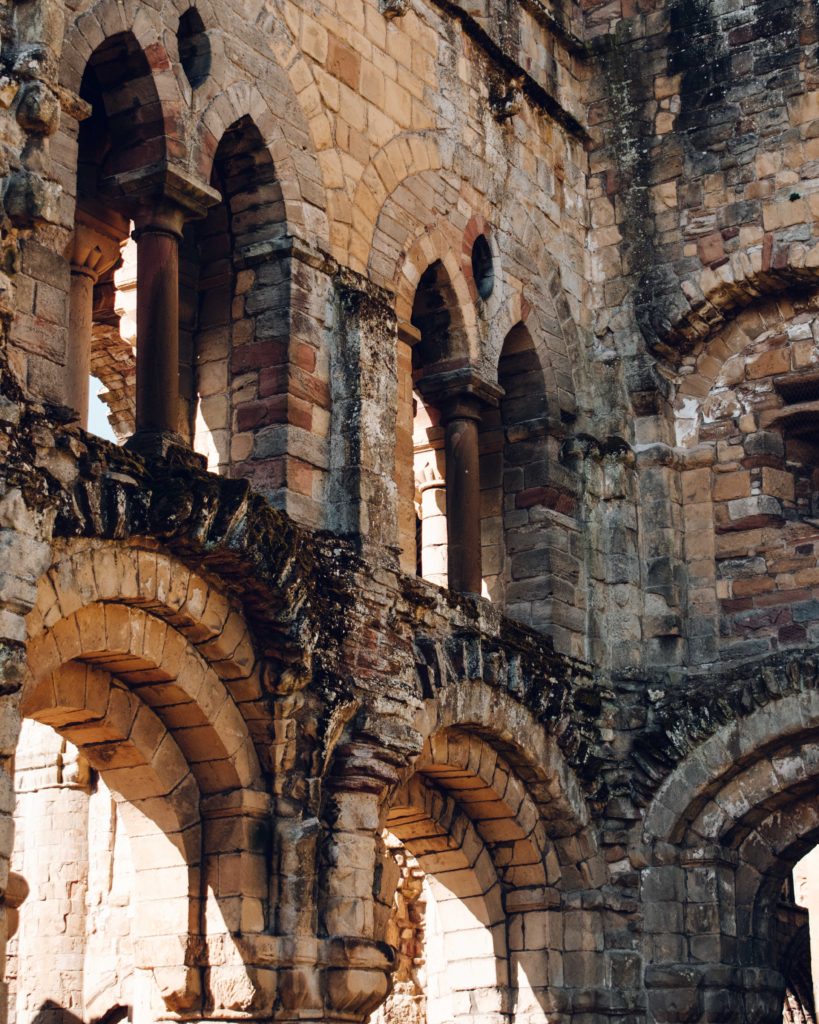
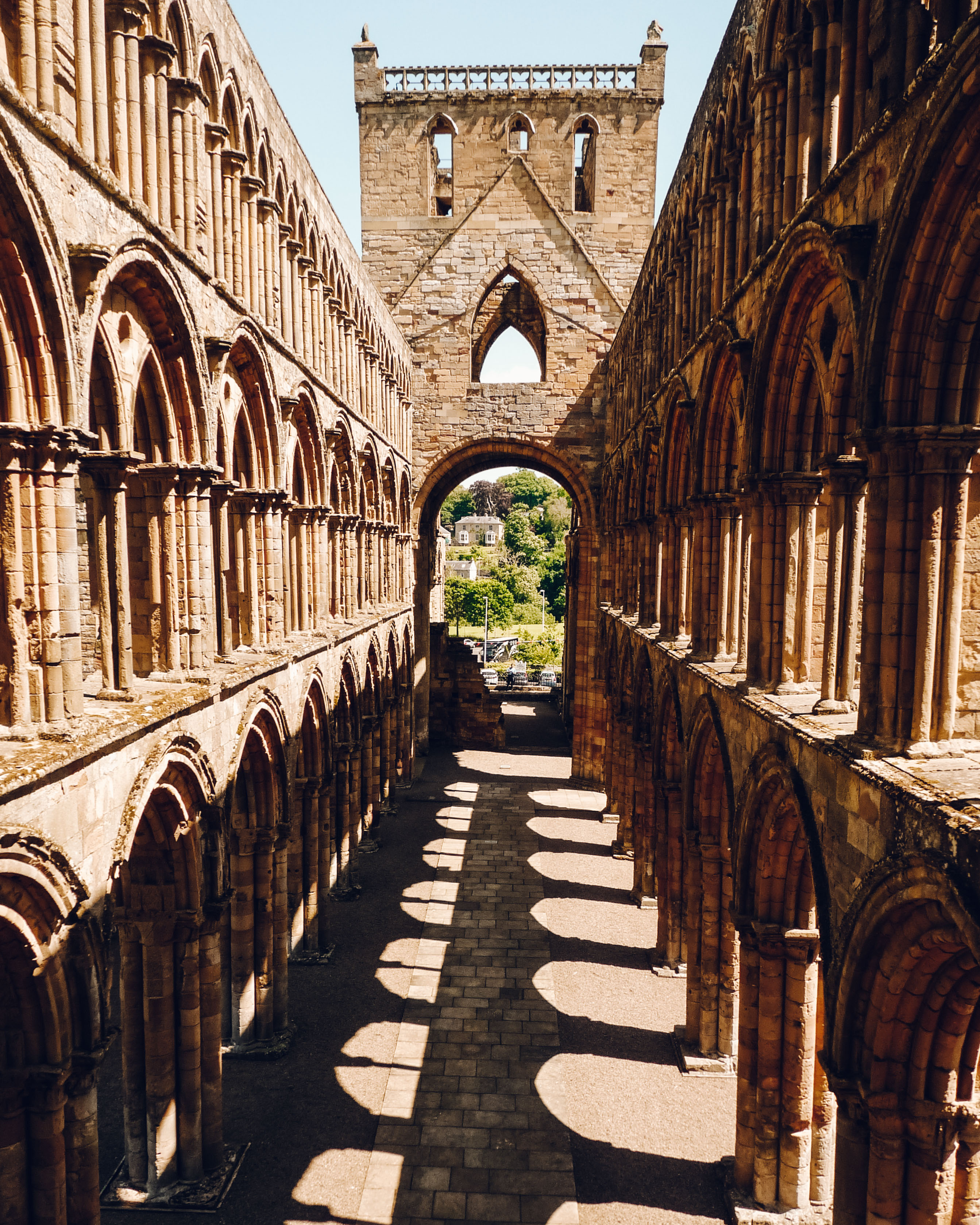
Jedburgh Abbey – established by Augustinian monks, first as a priory and its status was raised to abbey in 1154. Most of the Abbey buildings have been reduced to their foundations. However, the site is dominated by the largely intact Abbey Church, which features a Gothic style nave and Romanesque eastern end (Adult £3).
Melrose Abbey – the best preserved of the four. Founded for the Cistercian Order of Monks in 1136 but mostly destroyed in the 14th century by two separate attacks by the English armies. Robert the Bruce was involved in its restoration after the first attack in the 14th century and his embalmed heart is said to be buried in the Chapter House of the Abbey. There is a lovely view over Melrose from the top of the Abbey tower (Adults £3).
Kelso Abbey – the oldest and richest of the abbeys. Founded in 1128 for a community of Tironensian monks, it has strong royal connections, with James III and James IV both crowned here. It was severely damaged in 1545, in fighting with the English armies (free entry).
Dryburgh Abbey – established in 1150 by an order of Premonstratensian monks and probably the most picturesque. Its prime location on the route of invading English armies left the Abbey vulnerable to attack, with major damage in 1322, 1385 and 1544. The latter saw the wholesale destruction of the Abbey by the army of the Earl of Hertford. Sir Walter Scott is buried in the North Transcept (free entry to the grounds: Abbey currently closed for restoration).
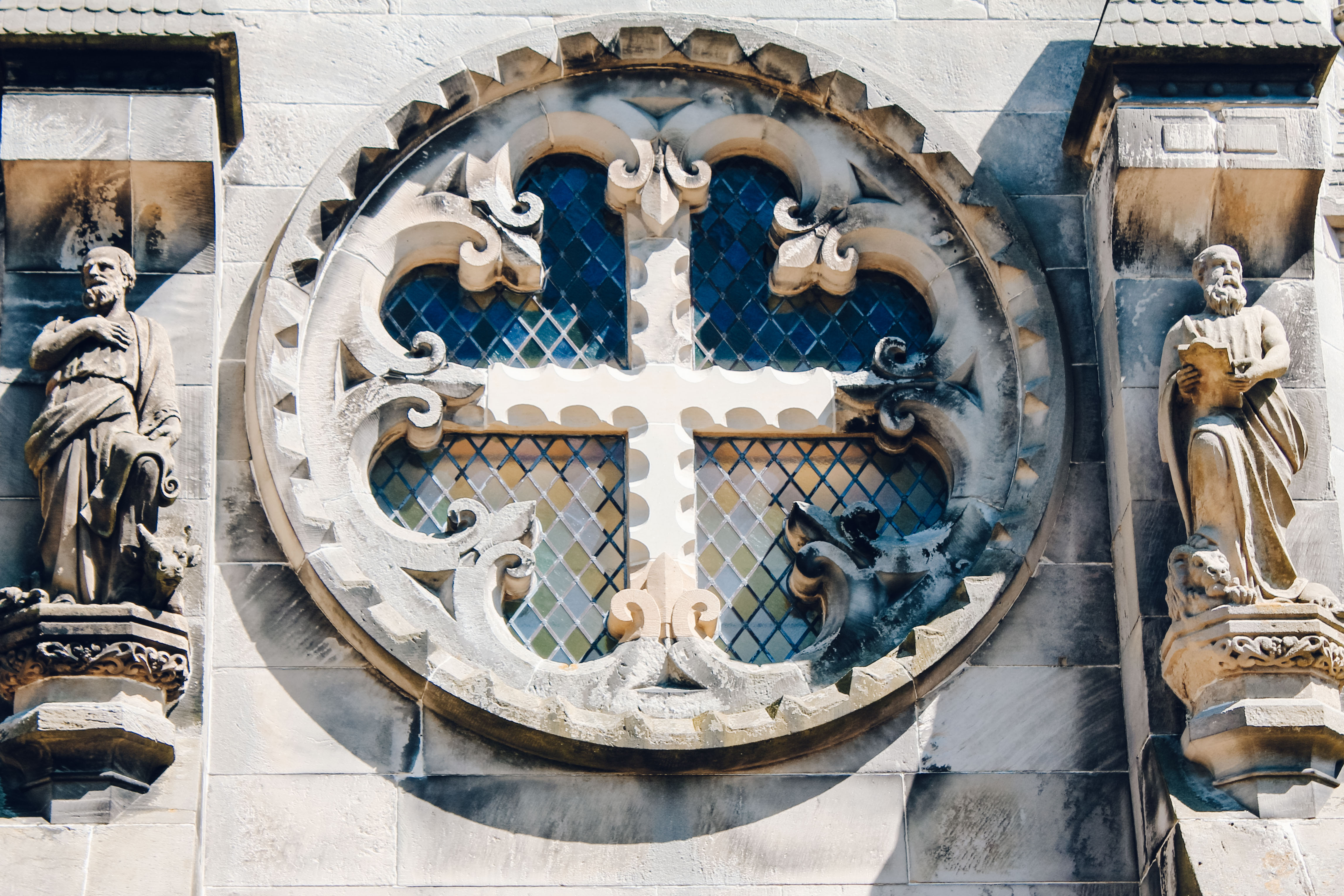
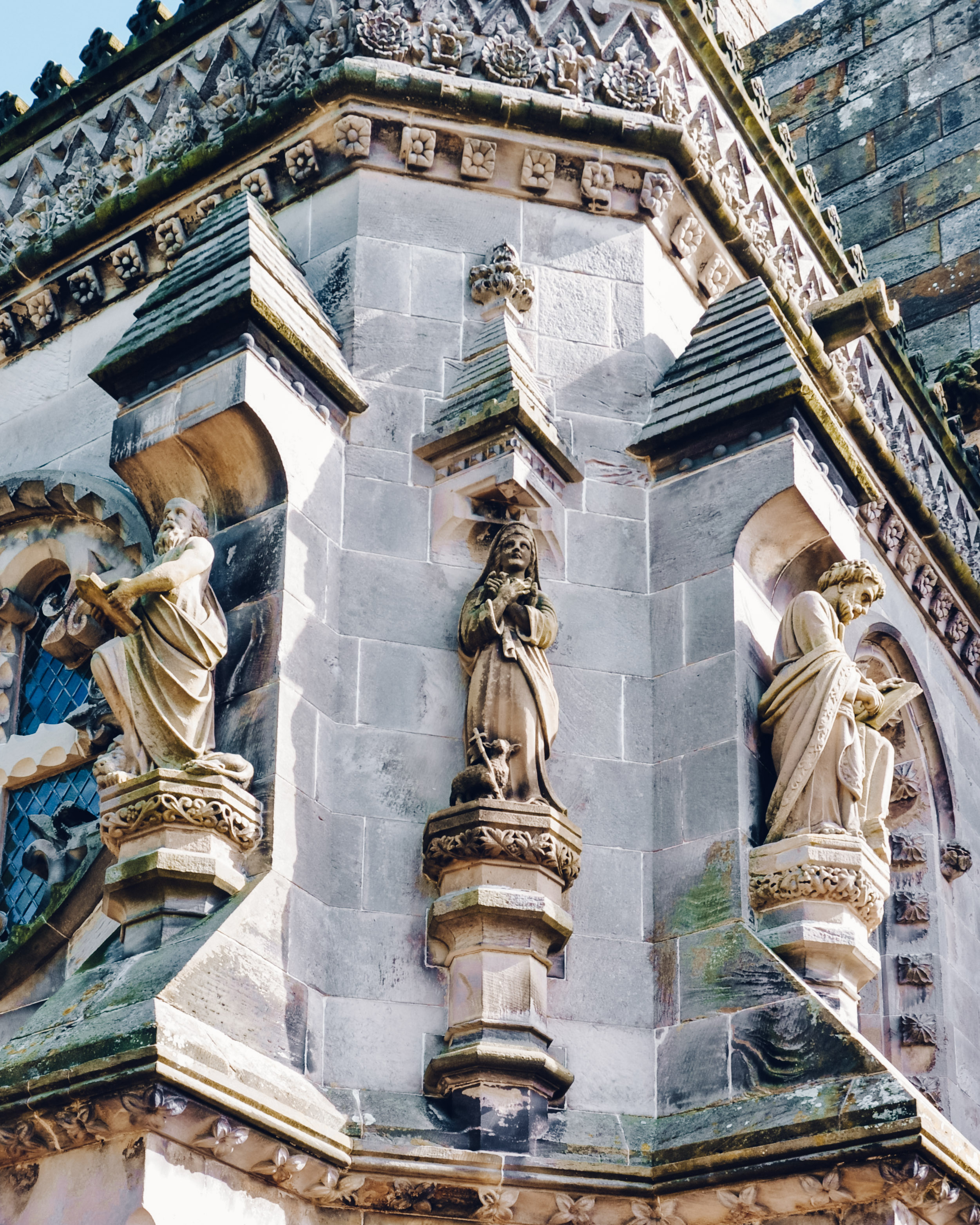
Rosslyn Chapel – before I get inundated by messages horrified at my poor knowledge of Scottish geography, I know Rosslyn is not actually in the Scottish Borders and is definitely not one of the Four Abbeys. It is in Midlothian and it has absolutely nothing to do with the abbeys. But it is so close, and such an interesting place, I am including it! It is also a very easy day trip from Edinburgh, as it is just seven miles south of the city.
Almost all surfaces of the 15thC chapel – both inside and out – are covered in intricate carvings which have captivated historians and visitors alike, trying to work out the meanings for generations. Whilst there are hundreds of carvings, there is only one written inscription – ‘Wine is strong. The king is stronger. Women are stronger still: but truth conquers all.’ Can’t argue with that.
Although the chapel’s unusual appearance has generated conspiracy theories for decades, it gained worldwide fame in 2003 thanks to Dan Brown’s The Da Vinci Code. The book and subsequent film has had a profound impact on visitor numbers, with over 181,000 people now visiting each year. I admire the pragmatism of the Chapel – they sell the book in their online shop, and the proceeds from increased visitor numbers have allowed the completion of a major conservation project.
Tickets can be booked online in advance, which is worth doing in the busy summer months (Adults £9.50). Note that photography is not permitted inside the chapel.
THE VIEWS
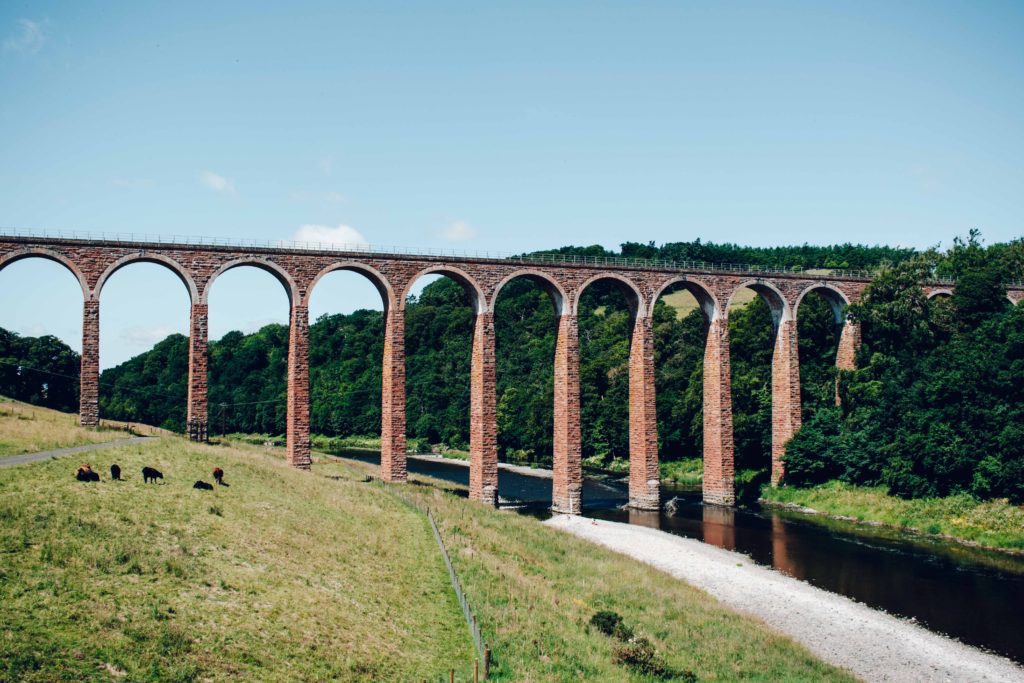
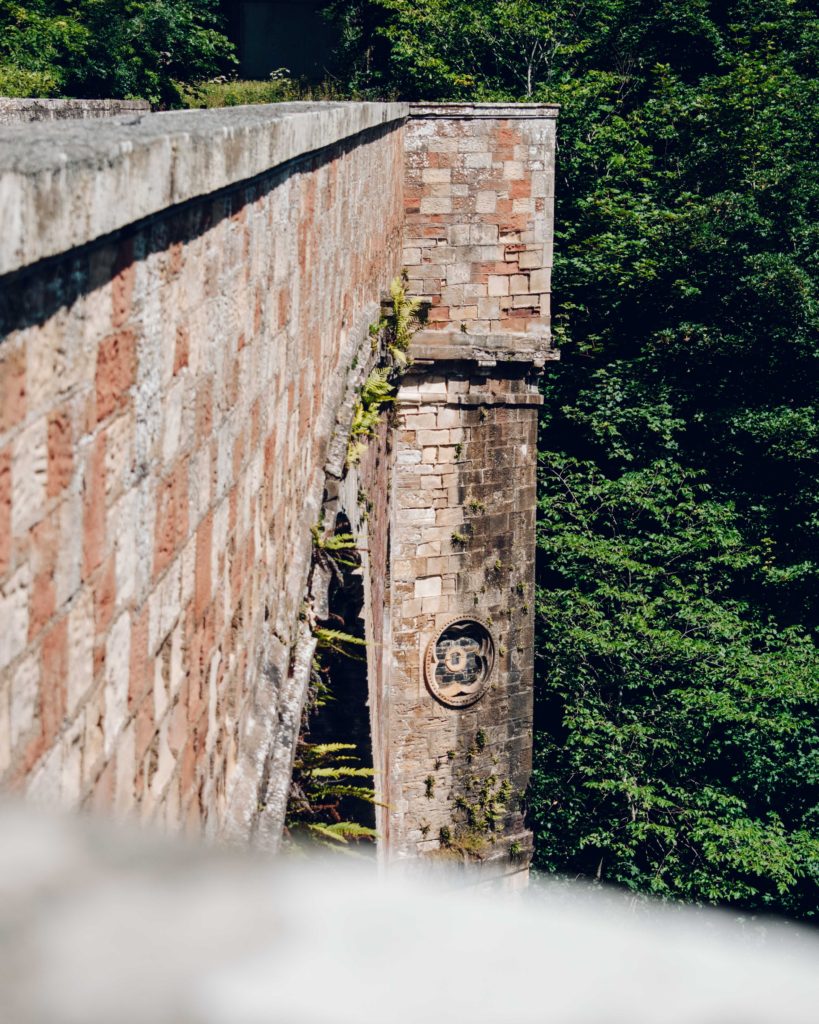
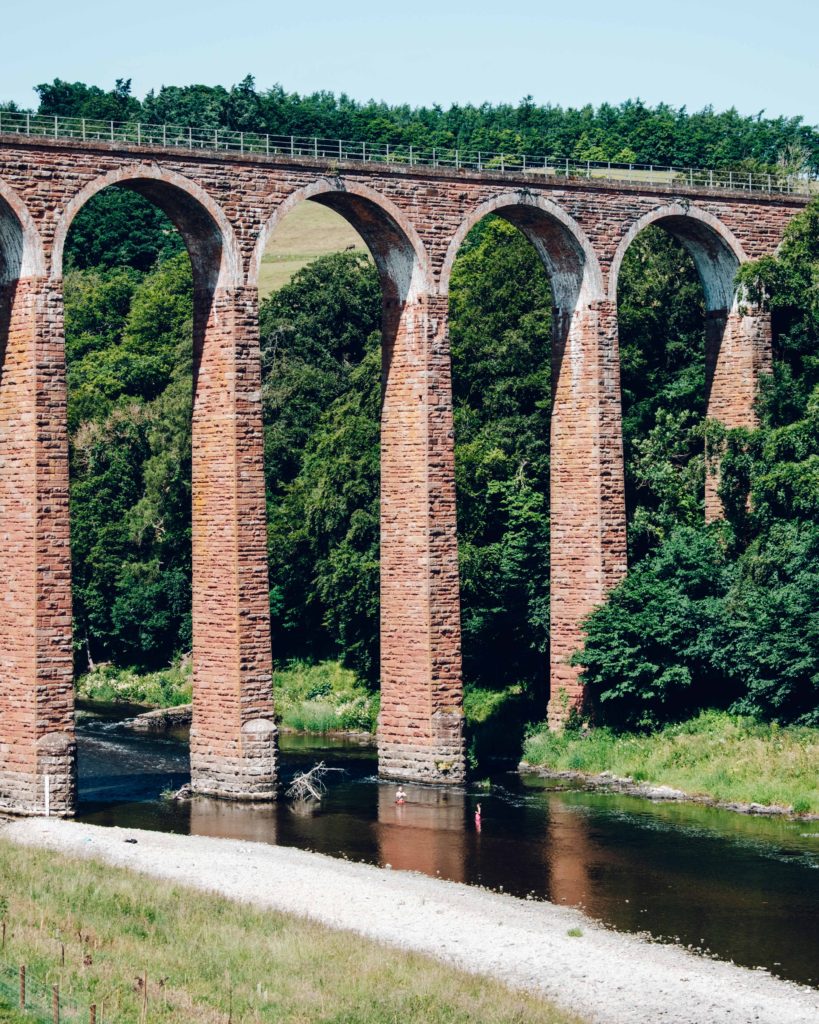
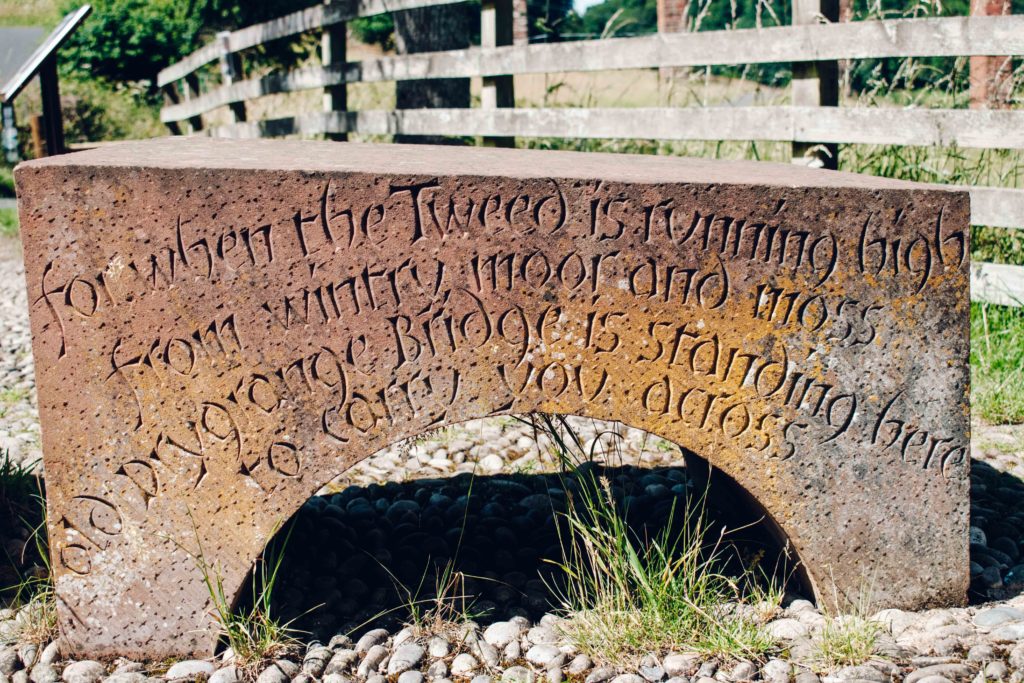
Leaderford Viaduct – a disused railway viaduct over the River Tweed near Melrose. On a warm day, a swim in the river directly under the bridge’s arches offers an unusual wild swim setting.
Scott’s View – if you’re heading towards Dryburgh Abbey along the B6356, there is a small layby to pull into to look out over the surrounding hills. It was said to be Walter Scott’s favourite place to sit and ponder in the Scottish Borders, and it certainly has lovely views out over the River Tweed and Eildon Hills. Rumour has it his horse instinctively stopped here during his funeral, so frequent were Scott’s visits. I apparently have a relative who’s horse did the same thing, although the stop was a pub rather than a natural beauty spot…
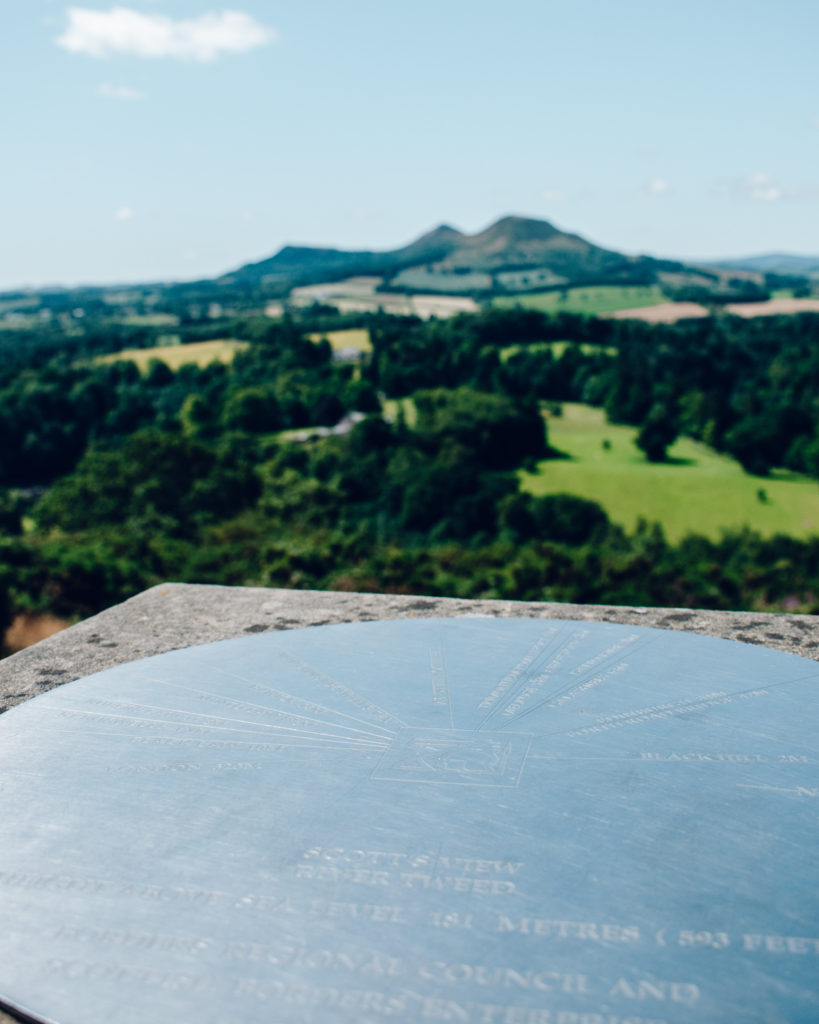
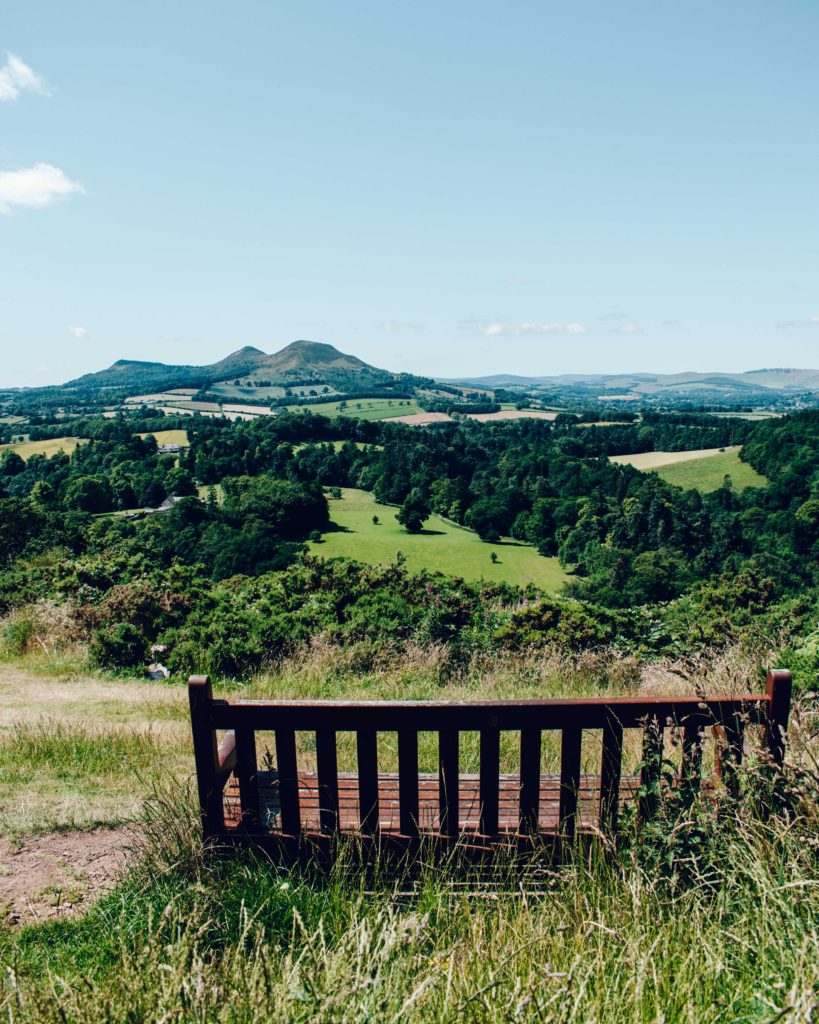
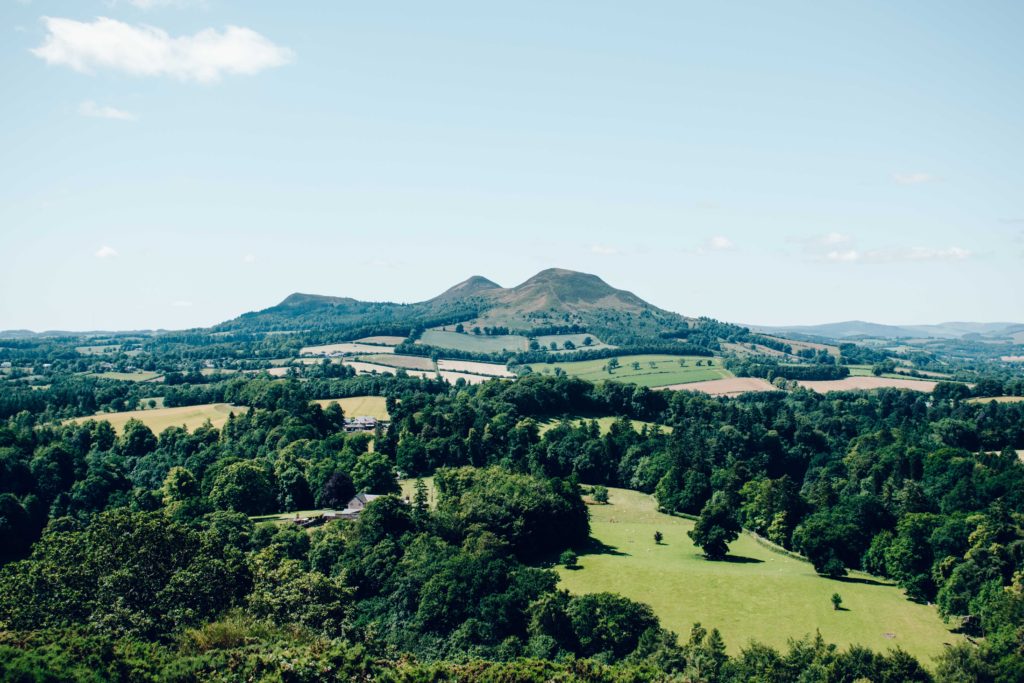
THE WALKING
John Buchanan Way – named after the writer, novelist and editor John Buchan (1875 – 1940). He wrote The Thirty-Nine Steps, which was the first popular spy thriller and a precursor to James Bond. He attributed the inspiration for his writing to the Scottish Borders. This 13 mile/21 km walk connects Broughton and Peebles, through the hills and valleys of Tweeddale.
Berwickshire Coastal Path – stretching 29.8 miles/48 km from Cockburnspath in the north, to Berwick-upon-Tweed, the route takes in quiet beaches and dramatic clifftop scenery. The walk from Burnmouth to St Abbs is a particularly lovely section totalling 8 miles/12.9 km and around 400 metres of ascent. This route takes you past Fancove Head, the highest point of the cliffs along the east coast.
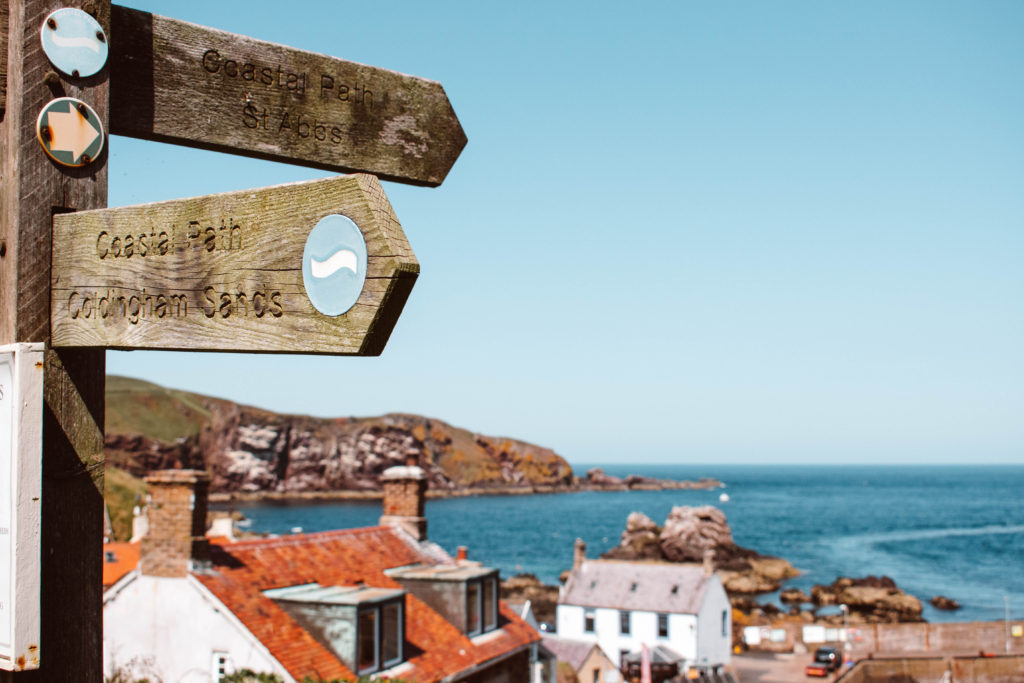
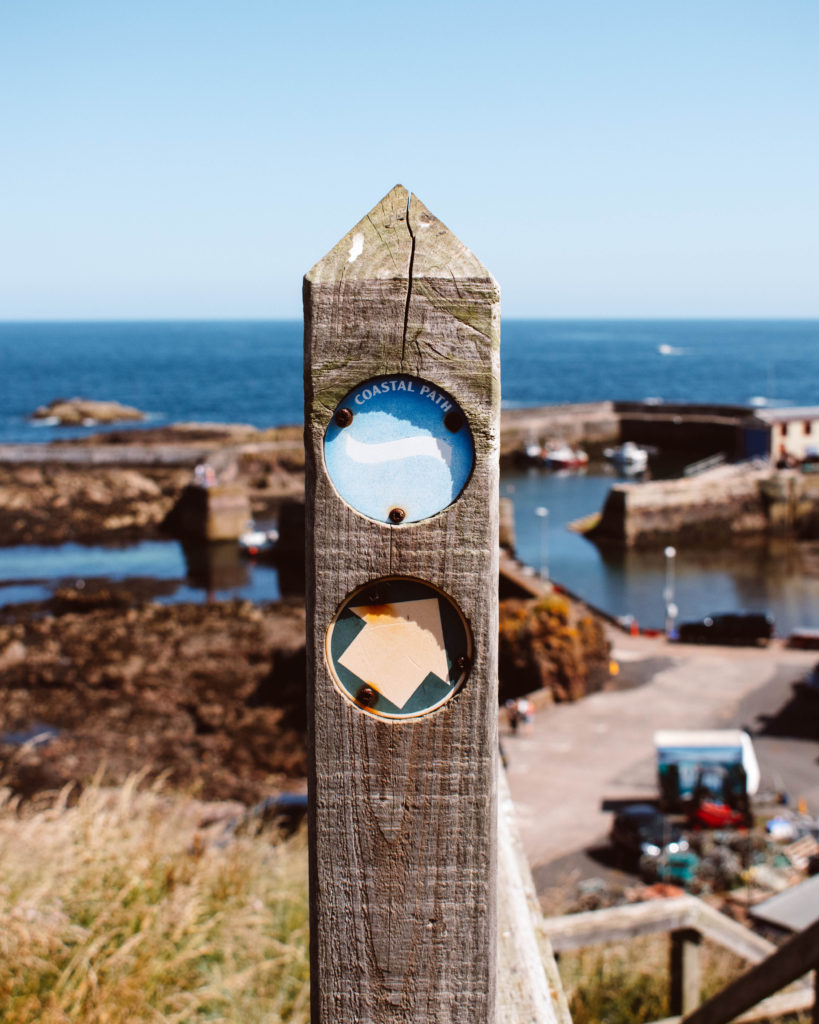
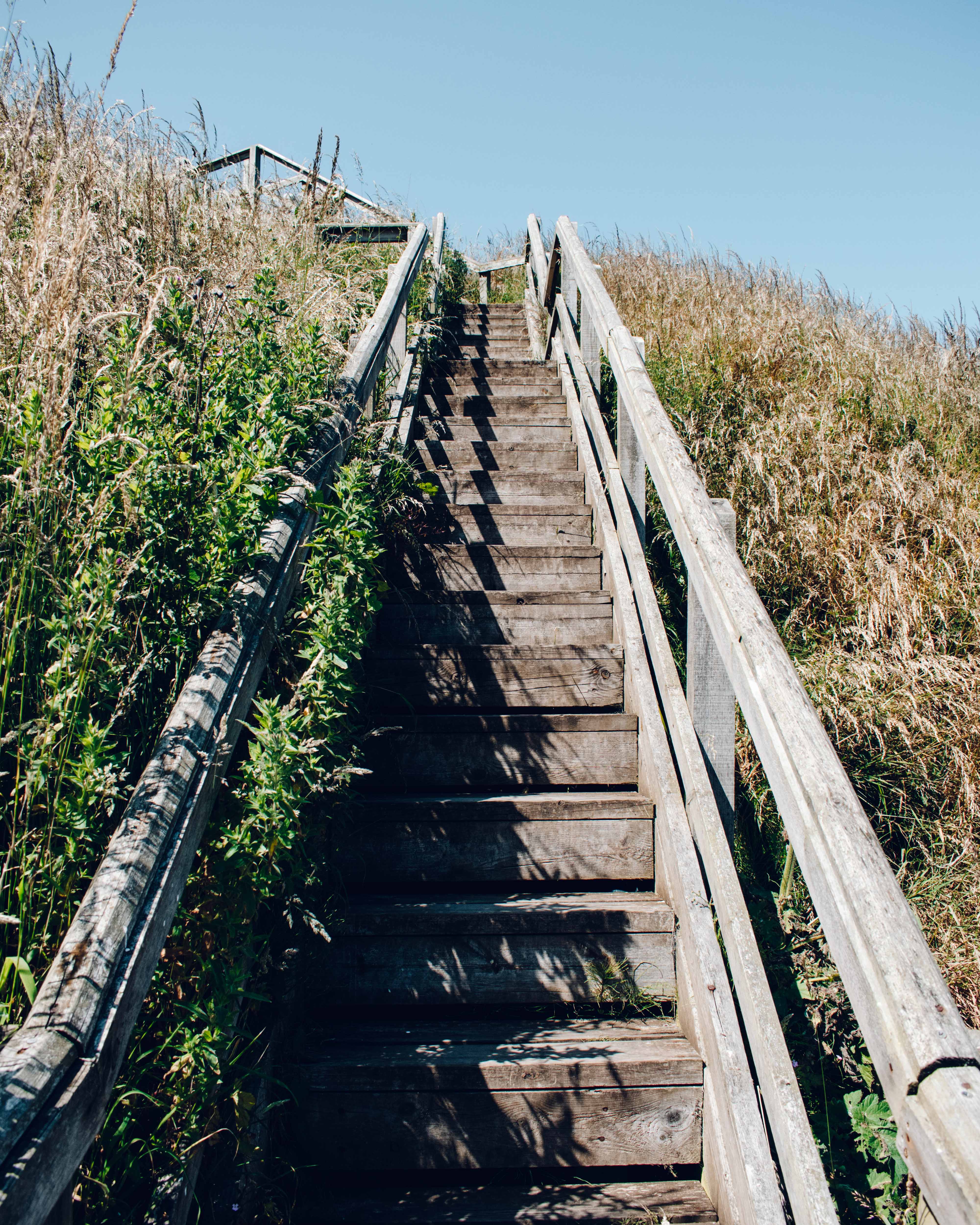
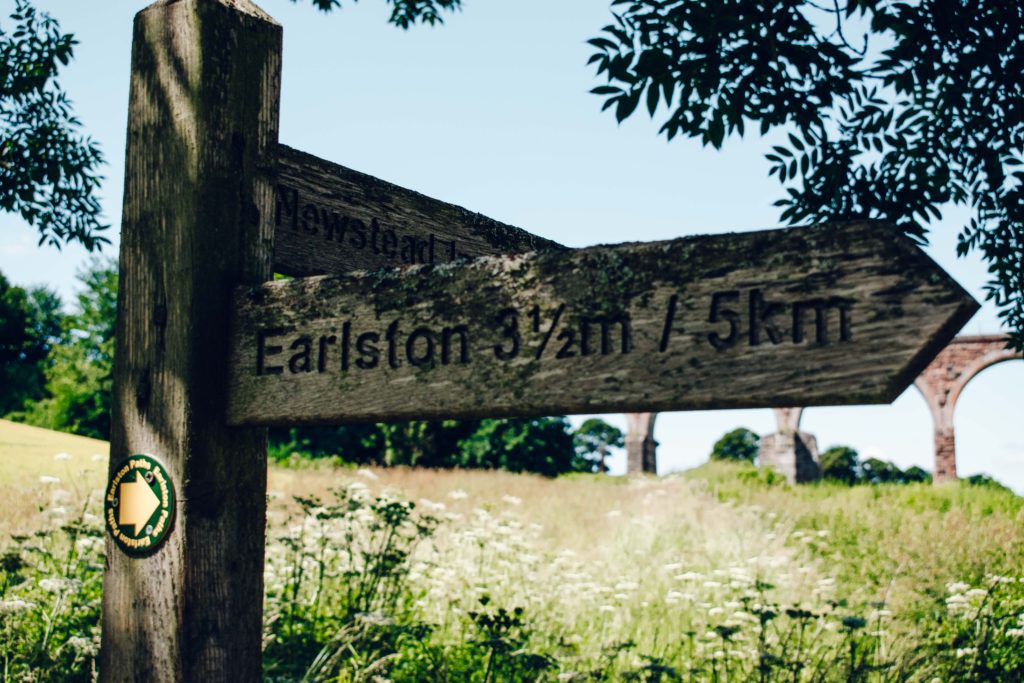
Borders Abbeys Way – linking the four abbeys of Kelso, Jedburgh, Melrose and Dryburgh along a circular 65-mile route. If that is a bit too far, the 12 mile/19.3 km Kelso-Jedburgh section is a fairly flat and reasonably easy walk, largely following the River Teviot.
Dryburgh Abbey and the River Tweed – this 4.75 mile/7.6 km route takes you on a circuit around the River Tweed and up to a huge statue of William Wallace built by the 11th Earl of Buchan, David Erskine. Wallace (1272-1305) – most famous worldwide thanks to the hugely historically inaccurate (and generally terrible…) film Braveheart – lead the Scots to victory over the English at the Battle of Stirling Bridge in 1297. He was eventually captured and hung drawn and quartered for treason. You will also visit the sweet Dryburgh Suspension Bridge. This was the first chain bridge in Scotland, built in 1817. It was a gift intended to allow the Dryburgh villagers to worship at the churches in nearby St. Boswells.
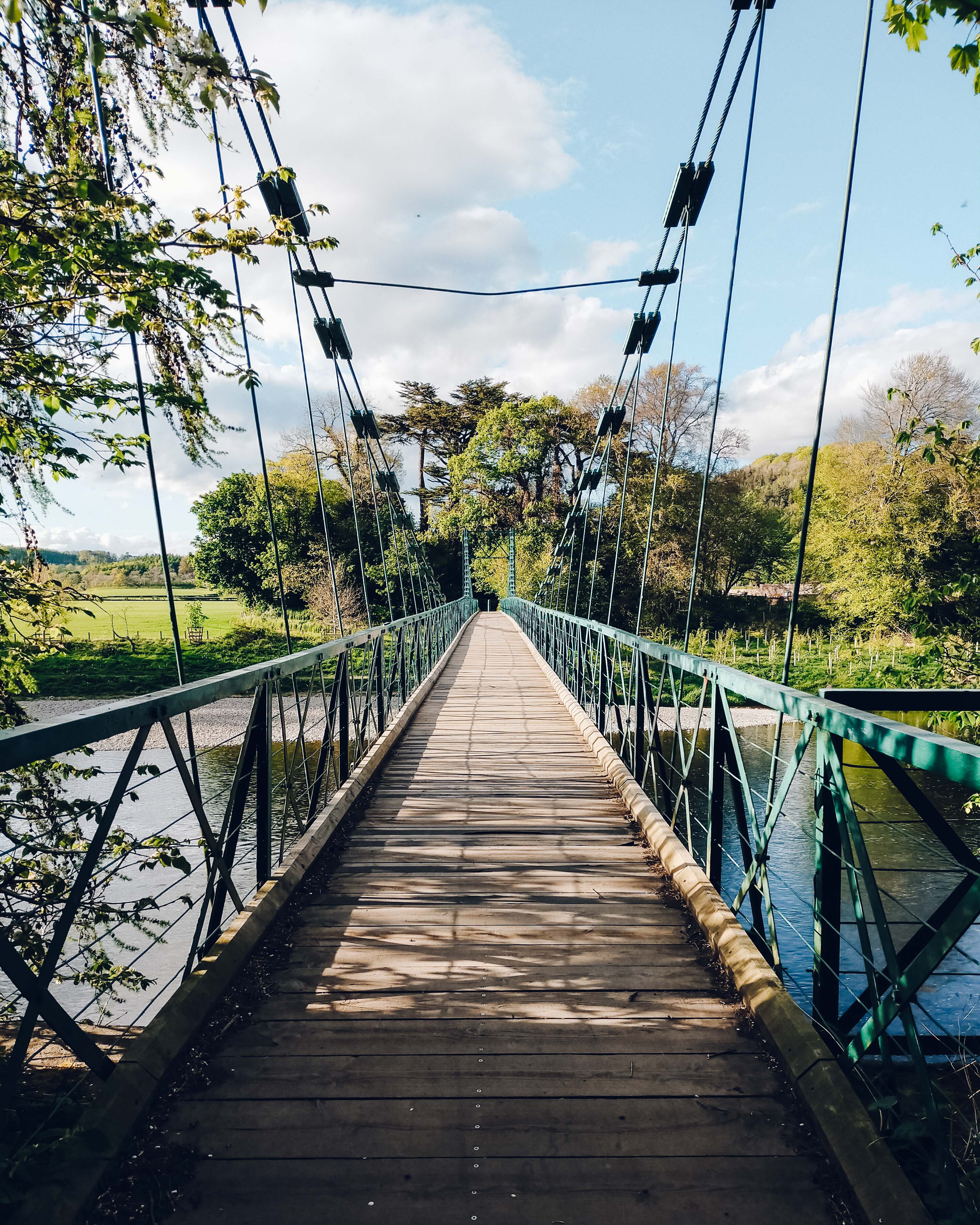
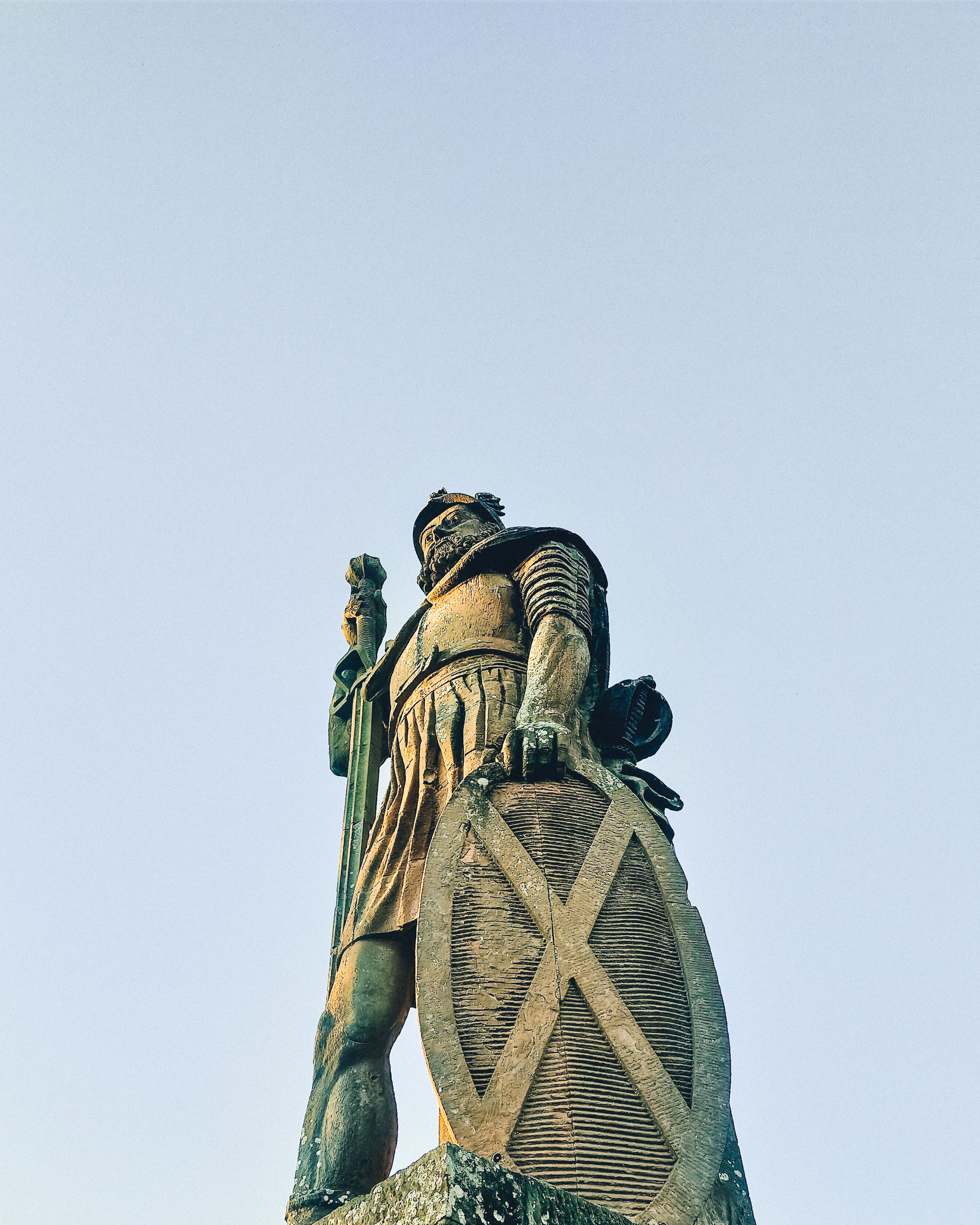
THE COAST
St Abb’s – this small fishing village is named after Æbbe, a 7thC Northumbrian princess who struggled ashore here after being shipwrecked and founded a nunnery. All manner of sea-based activities – fishing, scuba diving, bird-watching and sightseeing boat trips – run from the harbour.
The St Abb’s Head National Nature Reserve comprises 200 acres of coastline with sheer cliffs rising 300ft above the water. From the top of these you’ll get a spectacular view of the dramatic Berwickshire coast – especially at high tide on a stormy day. The cliffs are home to 50,000 seabirds including guillemots, razorbills, puffins, kittiwakes, and fulmars. Off the coast is the St. Abbs and Eyemouth Voluntary Marine Reserve, which was locally designated to protect the clear waters from overfishing.
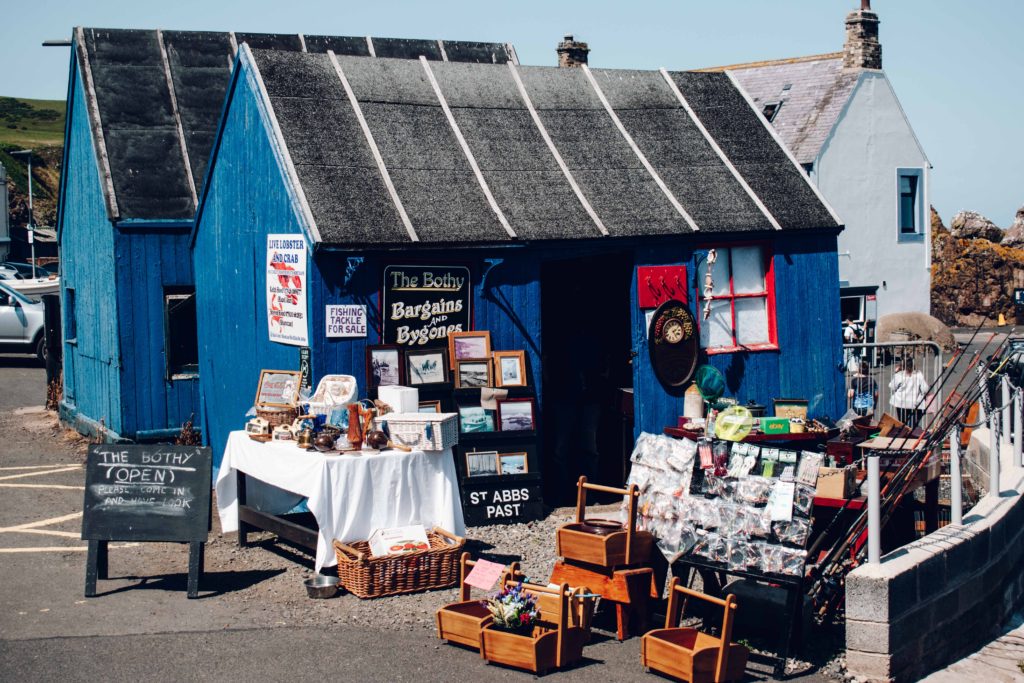
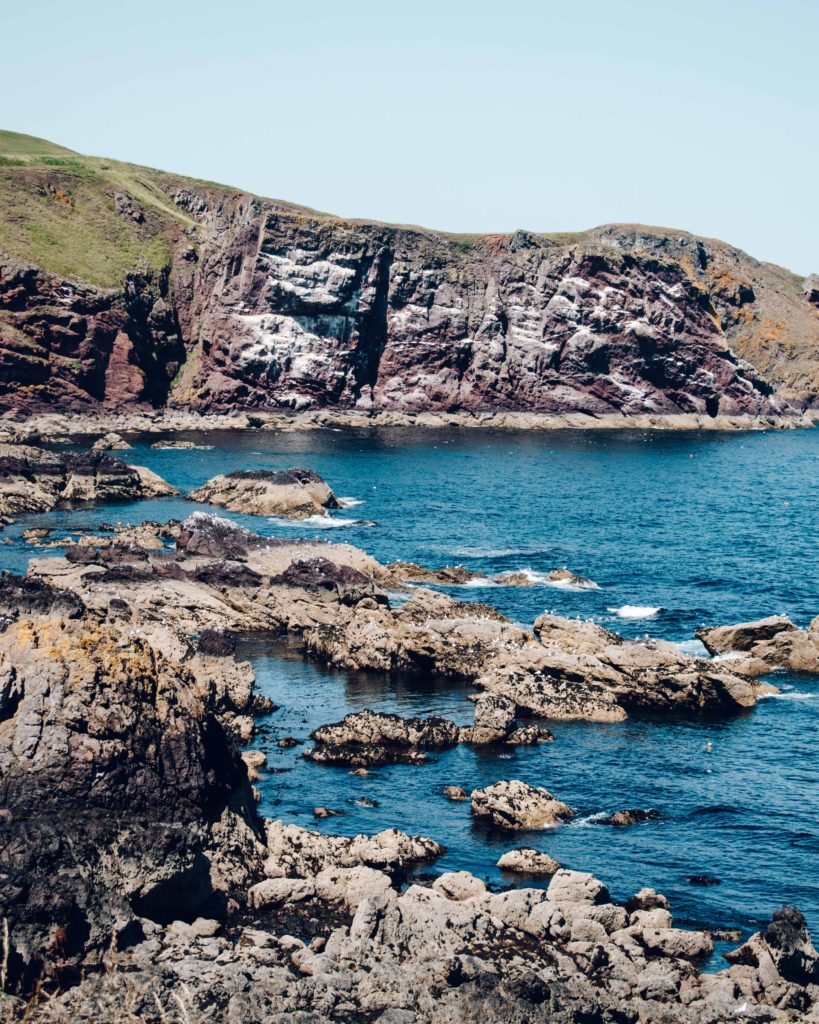
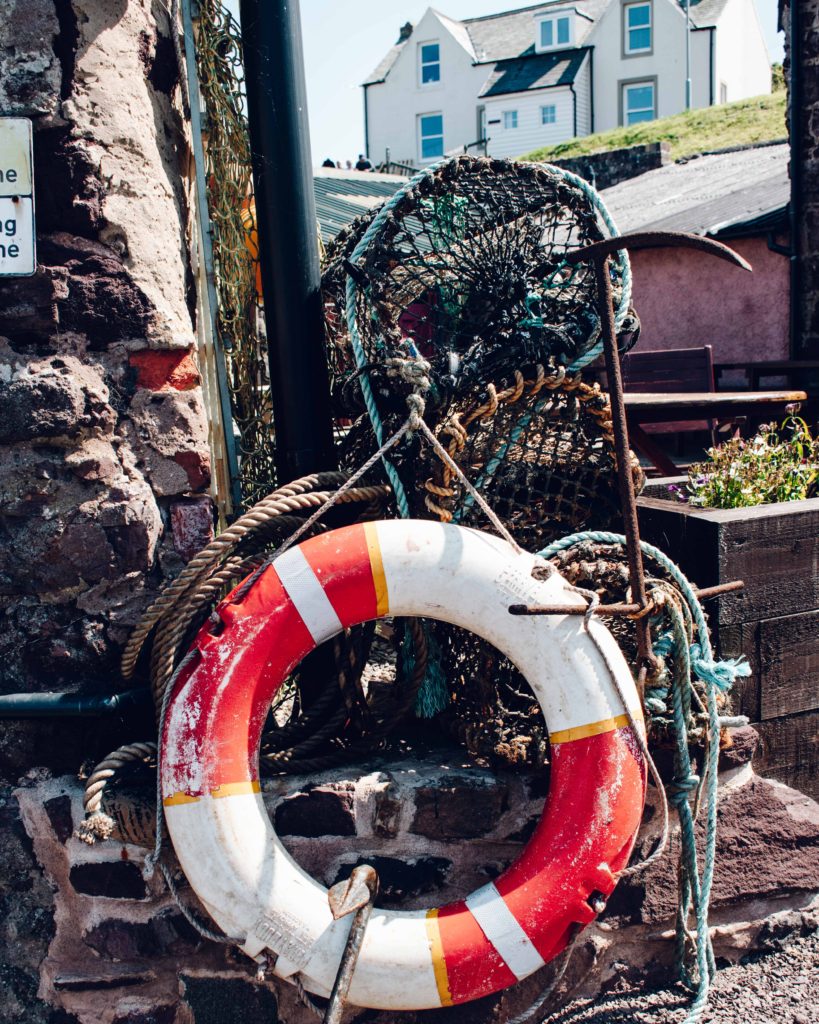
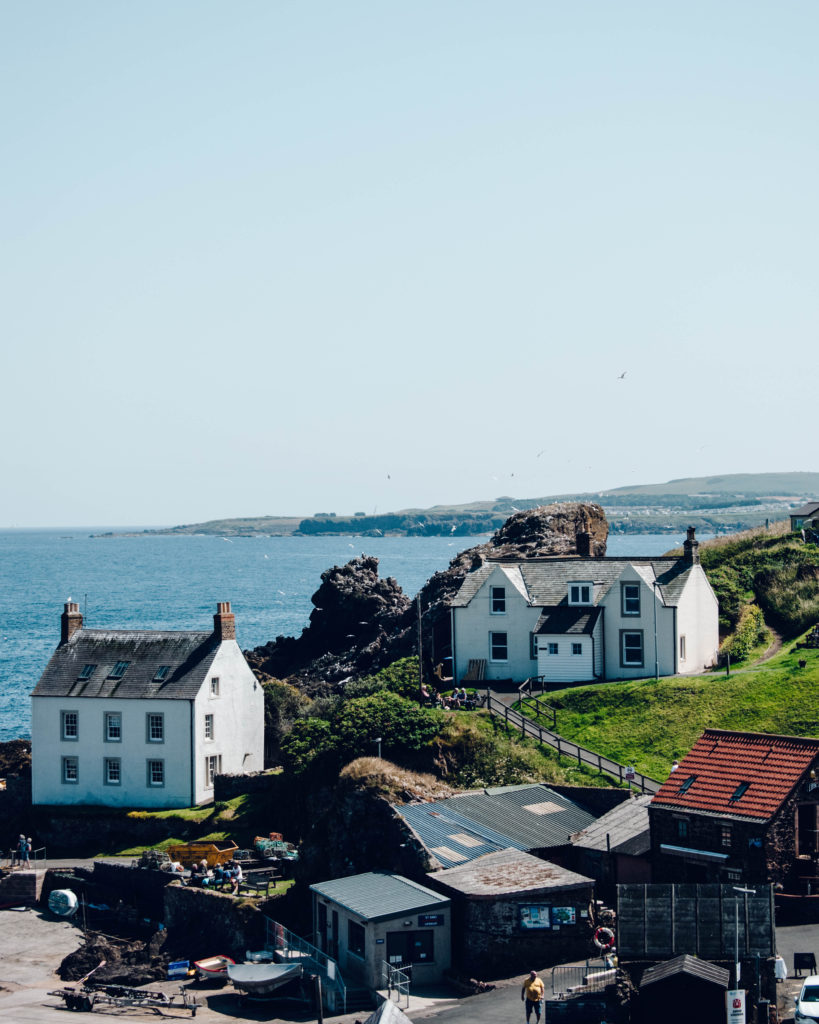
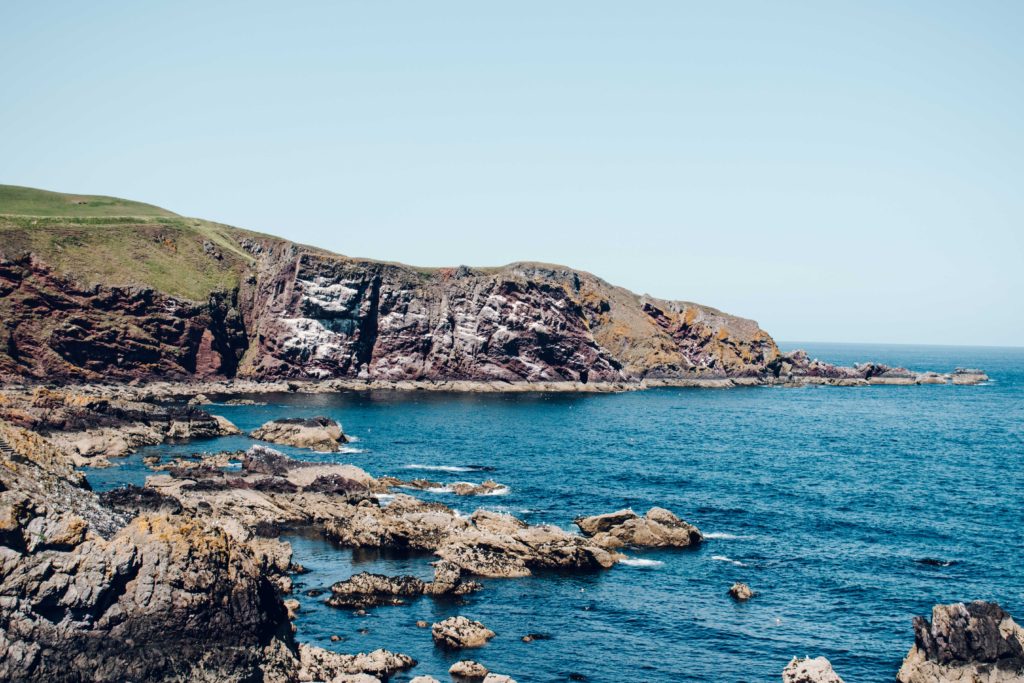
Coldingham Bay – just to the south of St Abb’s is a lovely sandy beach and a very popular spot for surfing.
Eyemouth – historic fishing town five miles north of the border with England. Like most coastal towns and villages in the 18th C, Eyemouth was once a hotbed of smuggling with narrow streets, caves and tunnels. Gunsgreen House, on the south side of the harbour, was the centre of illicit wine, spirts, tea and tobacco trade. Given the size of the house, it was clearly profitable business. It now houses a small museum.
Eyemouth once had a thriving haddock and herring fishing industry. The fleet suffering Scotland’s worst fishing disaster on 14th October 1881. A storm wrecked the fishing fleet and 189 fishermen were drowned, many within sight of the shore. There are a series of lovely memorials by Scottish sculptor Jill Watson in St Abb’s, Burnmouth and Cove.
WHERE TO EAT
Alex Dalgetty & Sons – wonderful, fifth generation family bakery with shops in Galashiels and Melrose. Sweet treats as well as hot pastries and freshly made sandwiches.
Ebbcarrs Cafe – locally caught crab and super fresh seafood on the harbour in St Abbs.
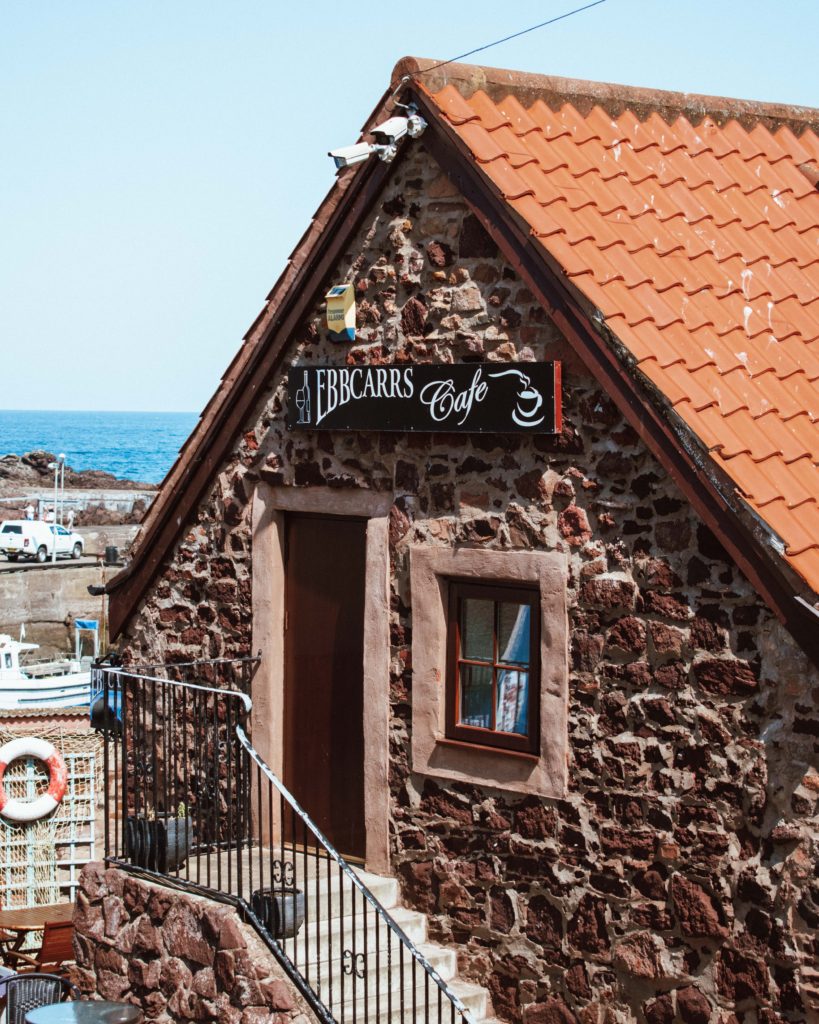
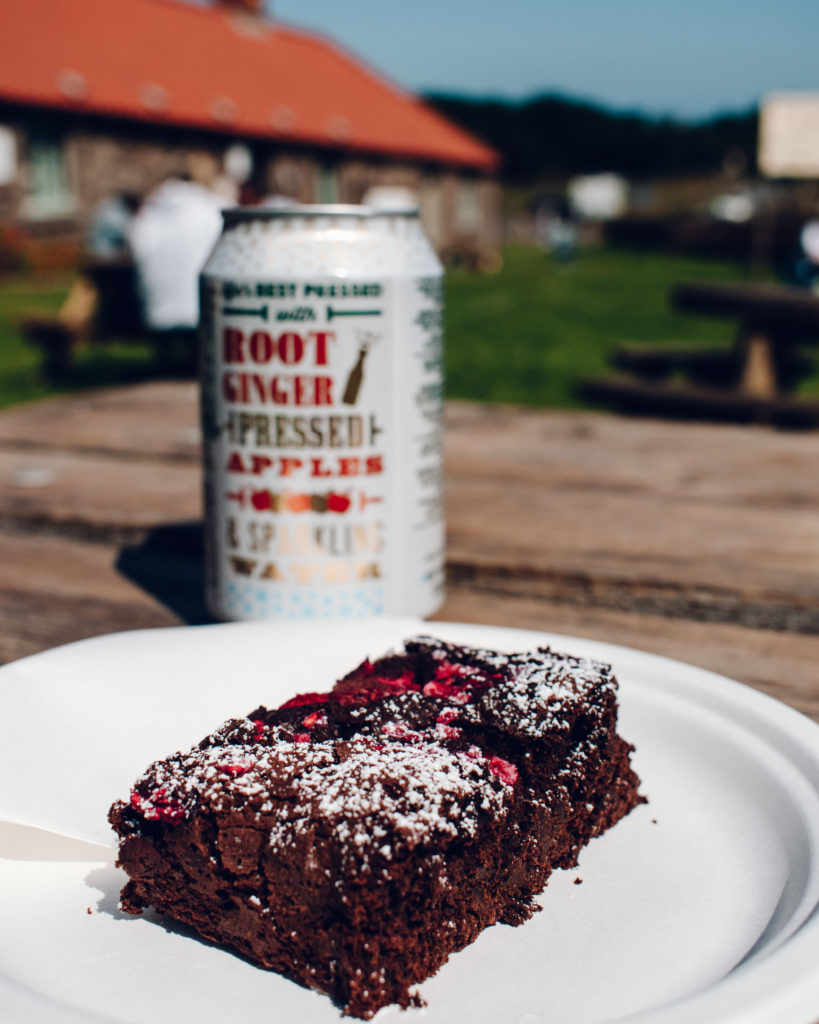
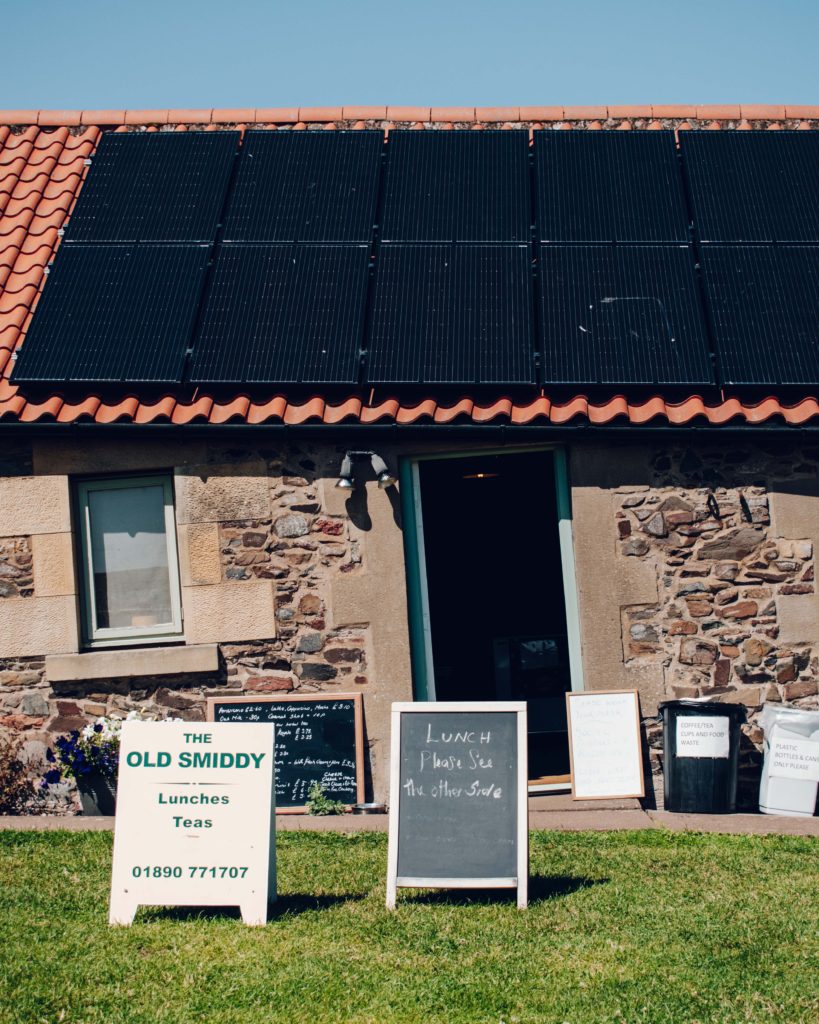
The Old Smiddy – simple lunchtime fare and baked treats at a small cafe just outside St Abbs. There is a sweet gallery just future along in the same building. A fully accessible path runs from the carpark all the way into St Abbs if you are looking for a less squeezy spot to park.
Flat Cat Café – more affectionally known in the Faraway Dispatches household as the Squashed Moggy, this Lauder cafes serves lovely home-made cakes, sandwiches and soups. There is also a small gallery with regularly changing exhibitions.
Bean n Gone – small trailer in Melrose selling coffee roasted by the Three Hills Coffee Co Company from nearby Selkirk.
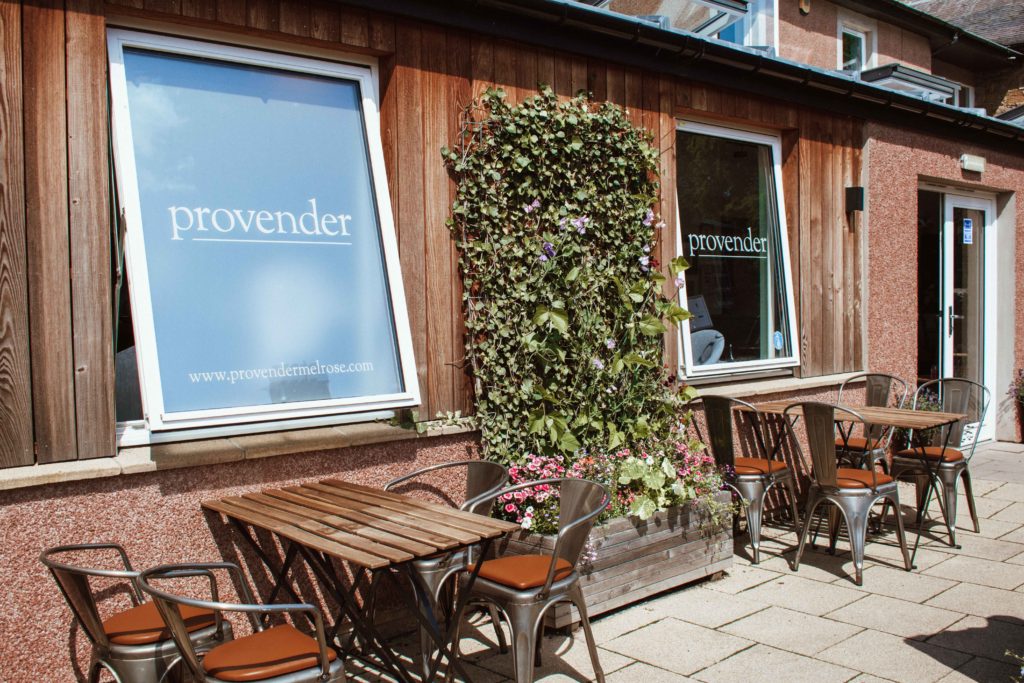
Provender – lovely menu based around local and Scottish produce at a Bib Gourmand in Melrose. Really good value given the quality.
Rhymer’s Café – when you arrive you are going to think I have gone a bit mad as it just looks like part of the petrol station, but stick with me. This roadside café is a firm favourite for a reason. The staff are very friendly, and I do not believe you can find a better sausage and fried egg roll anywhere!
WHERE TO SLEEP
The Bothy, Dod Mill – gorgeous self-catering barn conversion. Would suit two perfectly with a kingsize, mezzanine bedroom suspended over the open plan kitchen and living room. Pet sitter, babysitter, private chef and spa treatments are available on request!
Dalhousie Castle – if you want to sleep in a historic castle this is the real deal. It was the stronghold of Clan Ramsay, Mary Queen of Scots stayed here, Henry IV lay siege to it in 1400, and two centuries later Oliver Cromwell captured it! There are 29 tartan and tweed filled rooms.
SCHLOSS Roxburghe – large, luxury country house hotel with a championship golf course, and shooting and fishing on offer in the 300 acres of gardens and parkland. Rooms are a blend of traditional and modern – grey stylish bathrooms with dark wood beds and tweed upholstery.
Neidpath Castle – there aren’t many more romantic options than this! Neidpath Castle offer the chance to stay, just like Mary, Queen of Scots did in August 1563, in your own four poster bed in this medieval castle. The roll top bath and the open fire make it super cosy.
Westside Woodshed – beautiful, eco-friendly Scandi-style cottage ten miles south of Edinburgh in the Pentland Hills, with private hot tub. The décor is gorgeous – stripped back wood and neutral colours – and comes with lots of thoughtful extras.
I really hope that this guide has made you consider a trip to the Scottish Borders – perhaps alongside a trip to Edinburgh. You can find other guides to Scotland and the wider UK if you want to combine your visit with more British travels.




Leave a Reply